CONCRETE trends



AfriSam’s wide range of locally-produced and fit-for-purpose superior quality products are suitable for both construction and structural work. Enabling you to build from the ground up, quickly, and with the peace of mind that you’re off to the best possible start – without compromising on quality. Together, we make it possible. Ask for AfriSam.

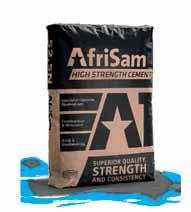
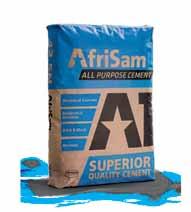
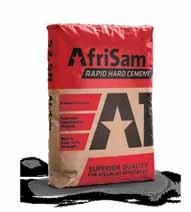

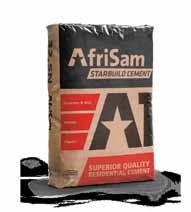

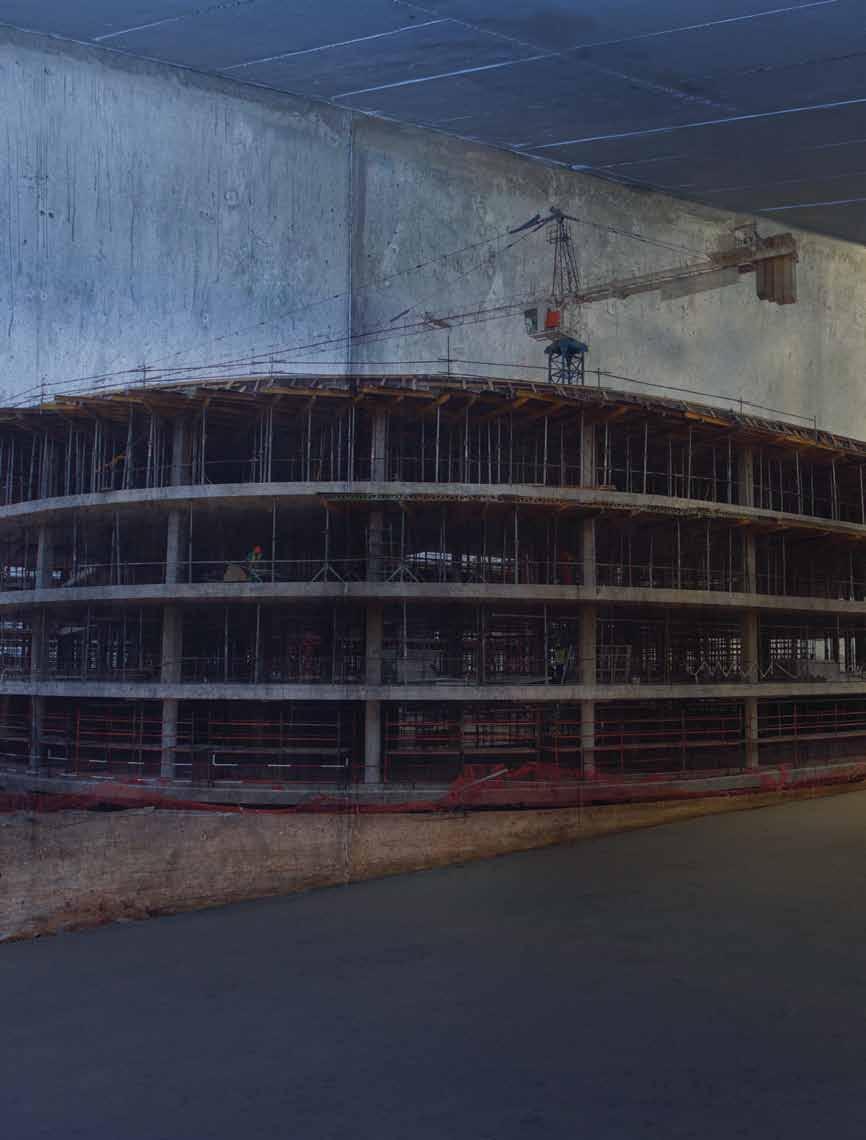
TOGETHER, WE MAKE IT POSSIBLE.
WITH YOUR COMMITMENT TO QUALITY, IT’S A QUALITY BUILD FROM START TO FINISH.
The voice of the industry

Editor’s comment 2
Industry trends: 3 - 5
AfCFTA economic integration Peikko
Association trends 6 - 12
WCA focuses on the cement industry in MEA CMA Big 5 W Cape CMA trophy winners Standards, certification and accreditation

Industry events and exhibitions 13 - 18 The dmgEvents Big 5 Dubai

Feature: Concrete asset management 19 - 23
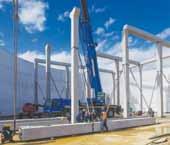
Safety trends 24 - 25
Personality trends 26 - 27 Mario Florio, director of the global All States Concrete Equipment
Project trends 28 - 34
Lourensford Motor Museum Stellenbosch University building Cape Peninsula reservoir construction
CMA member list 35 - 36
vICE prESIdENt: Devi Paulsen-Abbott email: DeviPaulsen@dmgevents.com
MaNagINg EdItor: Eamonn Ryan email: EamonnRyan@dmgevents.com T: +27 21 700 5608 M: +27 82 560 8718
proJECt MaNagEr: Tracy-Lee Behr email: TracyLeeBehr@dmgevents.com T: +27 21 700 5512 M: +27 73 367 9647
MarkEtINg: Saki Magoxo email: sakimagoxo@dmgevents.com T: +27 11 783 7250 M: +27 83 735 7213
ExhIbItIoN & publIShINg SalES MaNagEr: Kenneth Masvikeni email: KennethMasvikeni@dmgevents.com T: +27 21 7005509 M: +27 72 686 6998
dESIgN & layout: Virgil Jacobs email: rykim@mweb.co.za M: +27 83 524 5024
Reinforced precast concrete facade panels were used to dress the external elevations of two U-shaped service shafts which flank the northern entrance of a Stellenbosch University building.

Published by dmgevents: Units 5 & 6, EDGE HOUSE,16 Bell Crescent Westlake Business Park, Westlake, 7945, Cape Town, South Africa Tel +27 (0)21 700 5500 | Fax +27 (0)21 700 5519 76 11th Street, Parkmore, South Africa, 2196 | PO Box 650302, Benmore 2010 | Tel + 27 (0)11 783 7250 | Fax: +27 (0)11 783 7269
Endorsed by industry:
prINtEd by: Onyx Press T: +27 21 593 9173
ISSN 1560-2710
dmgevents and the editorial team accepts no responsibility for any opinions or statements in this publication. Consequently no person connected with the publication of this journal will be liable for any loss or damage sustained by any reader as a result of action following any statements or opinions expressed herein.
Will 2023 hold better prospects than 2022? builders are still contending with an uncertain economic forecast for the year ahead. but for all the unanswered questions, 2023 construction industry trend lines are rapidly becoming more clearly defined.
Certainly, the world faces headwinds on multiple fronts across the concrete and cement sector, the global construction sector and the broader international economy. the continued interconnectivity of markets is more apparent now than ever. We witness near-universal inflationary trends founded on construction labour shortages, demand exceeding supply, and severe, lingering disruption in supply chains hitting costs and construction portfolios. to respond, companies need to adopt a more comprehensive, global view of their construction supply chains to manage the uncertainty as we brace for a further challenging 12 months in 2023. With supply chain challenges expected to persist in some fashion for the new year, industry leaders will remain dependent on supply chain experts who can offer out-of-the-box solutions.
the past 12 months have seen the post-pandemic recovery gather speed – but warning signs are beginning to appear. Constrained supply coupled with soaring demand means inflation is surging in many markets, creating a challenging economic backdrop for our sector and the broader construction industry.
the warning signals are:
• Given the volatility, the IMF predicts a modest global growth rate of 2.7% in 2023
• Global migration has not yet reached pre-pandemic levels and skills shortages are also a factor fuelling inflation by driving up labour costs
• Interest rates are rising in many countries to dampen demand and control rising inflation - central banks will be hoping to engineer a ‘soft landing’

• Price escalation for crucial building materials
• Supply delays extending construction programme durations
despite the industry facing tough conditions, construction activity continues to strengthen across global markets. global research by turner and townsend reports 38.6% of markets surveyed were classified as ‘hot’ or ‘overheating’, while 30.7% of city markets are reporting construction inflation for 2022 of 10% or more, with no correction in sight. to combat increasing complex times and heightened risk for large organisations managing diverse capital portfolios, forward looking companies are tackling these challenges head-on by forming closer supplier partnerships; by sharing risk; and by embracing innovation. green initiatives are garnering increasing government support. between policy changes and government incentives, the construction industry is investing more heavily in green design and energy-saving technology. Integrating modularisation and prefabrication (especially using additive manufacturing techniques) into design and build processes drives sustainability and helps firms more easily scale.
the global construction industry is forecast to reach an estimated uSd10.5 trillion by 2023, and to grow at a Cagr of 4.2% from 2018 to 2023. the major drivers for the growth of this market are increasing housing starts and rising infrastructure due to increasing urbanisation of a growing population.
one region growing faster than others is the gulf Co-operation Council (gCC) whose construction sector is poised for a period of strong growth in the short to medium term. It is outperforming the wider economy and recording growth in the region of 3.5-4% a year on average in 2023-24. this upbeat forecast reflects the boost to available project finance from record high energy export revenue and the ongoing pursuit across the gCC of long-term energy and nonenergy sector development plans.
Its construction sector has a large pipeline of projects, where numerous contracts are yet to be awarded, across a wide range of sectors including energy, power, water and transport infrastructure, commercial and residential real estate, and industrial developments. n
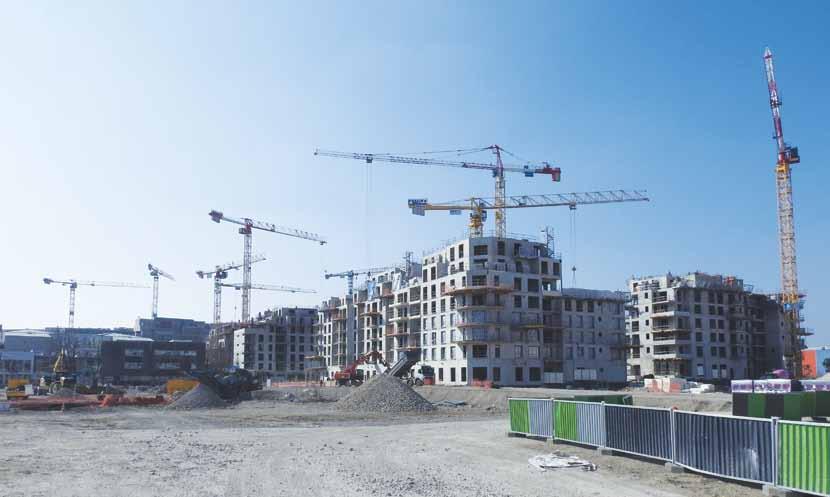
The African Continental Free Trade Area (AfCFTA) agreement will create the largest free trade area in the world measured by the number of countries participating. the pact aims to connect 1.3 billion people across 54 countries with a combined gross domestic product (gdp) valued at uSd3.4 trillion. It has the potential to lift 30 million people out of extreme poverty.
however, there’s a ‘but’ – achieving its full potential will depend on putting in place significant policy reforms and trade facilitation measures which africa has the barest record of ever implementing. AfCFTA requires the kinds of deep reforms necessary to enhance long-term growth in african countries. these things take time, he cautioned, offering the analogy of North America’s equivalent, NAFTA, in the run up to which in 1993/94, “uS president bill Clinton explaining the benefits of trade to the citizens of the uS was probably the toughest challenge he faced in his political career”. part of the reason is that trade groupings in North america, Europe and asia all took decades to achieve fruition.
“trade is not simple - it is complex due to the enormous amount of detail and number of stakeholders involved. take that complexity and multiply it several times over for a continent of 55 countries and 42 currencies, and it is even more so. therefore, while it may be right to be impatient, we also need to allow things to run their course,” says Fouche.
he notes that not all countries have ratified the agreement, with the biggest concern for South africa being that botswana, its neighbour and one of its largest trading partners, has still not ratified it. “botswana is part of the Southern african Customs union, the oldest customs union in the world having started in 1910. It has signed the AfCFTA, but has still not ratified the agreement in parliament. I’m not sure what message this sends to the rest of africa.”
When it comes to regional integration. africa has a long history of signing agreements that aren’t worth the paper they’re written on, says Fouche. “Among many, there’s the SadC agreement we’ve had since 2008, which falls into that category of being quasi non-operational. When such international trade agreements risk impacting national policies of a country, they are typically defanged.”
However, where AfCFTA differs from previous agreements is the enormous amount of effort and mobilisation of resources that has already been put into the agreement’s formulation. For instance, there is a new USD1 billion Adjustment Fund by afreximbank which explicitly recognises the key political constraints and tariff phase downs of short-term fiscal revenue within many small african countries, as tariffs are reduced over five or 10 years. apparently this fund will grow to uSd8 billion over time.
“It has to be remembered that this is not really a loss of fiscal revenue – by making it easier to import the idea of the trade agreement is for africa’s economies to become more competitive and to grow. this over time should raise tax receipts in countries not just at their borders but at corporate and personal income tax levels as well, as economy activity expands. Competition is good for growth and consumer variety.”
“a further lesson to learn from past agreements is the inability of member states to deliver on their regional integration commitments, often not for political or technical reasons, but rather the result of a technical capacity gap,” explains Fouche.
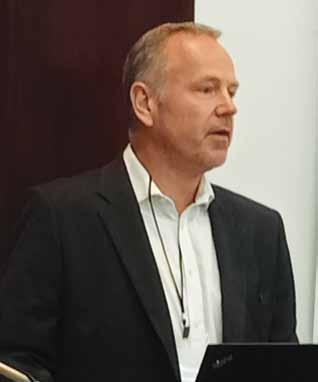
To address this, Fouche lists various accompanying initiatives of the AfCFTA that target practical constraints on the continent:
• The Afreximbank Collaborative Transit Guarantee Scheme aims to facilitate the seamless movement of goods across borders while reducing the cost of transit bonds, as well

as the time to import and export. this means if trade goes through a third country before reaching its end destination, this facility eases the whole process.
• The Pan African Payment and Settlement System, a US$3 billion facility which backs the clearing of local currency cross border payments. this is an alternative to the existing way of moving forex across borders via the corresponding bank system. this is a massive need since of the 55 countries and 42 different currencies, many of which do not have adequate liquidity.
“There is consequently real potential in the AfCFTA, but it is currently fragile and being highly oversold to the public. We are only one year and a bit into what is a multi-year process. It will mainly manifest as opportunities within the agricultural industry, (light) manufacturing, and support for the expansion and deepening of regional value chains (rvCs). however, we don’t really have well established and deep rvCs in africa, so developing them would really underpin the structural transformation which is urgently needed.
“regional Economic Communities (rECs) like SaCu, Comesa and EaC tend to trade mostly among themselves – and less with other rECs. that needs to develop before rvCs can develop and mature. the present rEC markets are too small in isolation to attract the necessary market-seeking investment and their supply bases are too narrow to facilitate real specialisation and rvC development. to overcome the macroeconomic challenges facing african economies, we need scale, specialisation, differentiation and trade complementarity of inter-rEC integration.
“It is therefore unfortunate that negotiations on rules of origin in some sectors, like textiles, are taking so long, admits Fouche.
he notes that for a regional value chain to develop, there needs to be liberalisation of the products being traded, and of the services that allow those products to be manufactured and to cross borders. If these things are not done simultaneously then it will create challenges for rvCs to develop.
“before any country can trade goods - they must first produce them. unfortunately, a country that is not particularly
good at producing something would be no better at exporting them. I therefore present the problems facing South africathe most diversified and mature economy on the continent – as an analogy of what other african countries uniformly face:
“We tend think our trade problems lie with the level of imports, so the solution must be to stop them. however, imports occur for a good reason – they are better or cheaper than local equivalents. before we can export, we need to produce our own goods competitively or import inputs.
“In addition, we imagine migrants are stealing local jobs, so we seek to deport them. yet many productive migrants add to productivity, not subtract,” says Fouche.
“the real problem in both instances is that South africa is not competitive enough domestically – and this goes for other african countries as well. productivity matters in trade and countries cannot fix it by making trade rules. Fundamentally, productivity only improves when you firstly keep the electricity on and secondly have the workforce actually working. If your workforce is uneducated, achieving export market success will be too big a challenge. South africa therefore needs to focus on education as if it matters – not for example as sheltered employment for unionised teachers who refuse to have their work inspected this is also true for adult education. It is unconscionable to have lost two generations of South african people who have been failed by the education system.”
In South africa, import replacement broadly takes two forms: designation and localisation. “designation is all about forcing the public sector to procure goods from local producers. In South africa, we’ve had designation as part of our legislation since 2008, with about 28 sectors designated. there is no hard evidence produced as to why these sectors were selected, or how they have measured up since the start of this policy
“It is clearly not working, as evidenced by a continually rising unemployment rate, whereas if it were successful the opposite should be occurring. It is an opaque process wherein nobody knows how one sector is selected over another with no public participation in the process. I am not sure this is in line with the spirit of the AfCFTA. Neither is neglecting the SADC we’ve had for more than a decade,” adds Fouche. n
Peikko South Africa ran a series of seminars in November 2022 on precast concrete construction using Peikko bolted connections.
Held in collaboration with the South african Institution of Civil Engineering (SaICE), and with publicity input from the Concrete Manufacturers association (CMa), the seminars were staged in Cape town, pretoria and Johannesburg and were also streamed live for those who could not be physically present at one of the seminar venues.
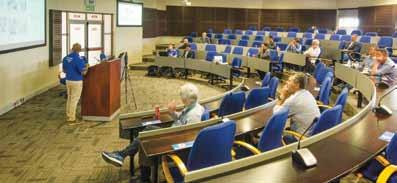
SaICE facilitated the event and invited its members and peikko business associates and customers to attend. live presenters included: peikko South africa’s managing director and structural engineer, daniel petrov; and peikko project engineer, Winston visser; as well as two peikko engineers from abroad, petri SuurAskola from Peikko Finland (Peikko’s home base); and Nirajuthan Selvarajah (Nick) from peikko gulf llC in the Middle East.
other live participants comprised kush parmer of SaJ Enterprises ltd who flew in from kenya, as well as a group of local structural engineers, architects and contractors who shared some of their hands-on experiences with peikko products and systems. In addition to the live presentations, internationally sourced virtual presentations were streamed from Finland, latvia, lithuania and germany.
all day affairs, the seminars were run over four modules. the Finnish ambassador, Anne Lammila, opened the event in Cape town and pretoria, and tom Mckune of SaICE made the welcoming address. he was followed by daniel petrov who gave a brief overview on peikko South africa and discussed some local projects such as the Fourways Mall Parkade, Columbine Square and Cedar Square, where peikko bolted connections were used.
petrov observed that the number of buildings and other structures being built with precast concrete in South africa has shown consistent growth over the past years and both he and visser elaborated on how peikko bolted connections are facilitating the migration to precast concrete structures by offering a fast, safe and cost-effective construction technology.
“our South african footprint began in 2016 with the construction of a multi-storey parkade at Fourways Shopping Mall in Johannesburg, and although a number of peikko projects have been completed since then, there is still a substantial group of engineers interested in but unfamiliar with the technical aspects of the system – hence our decision to run the seminars,” said petrov.
during the Cape town event, structural engineer, herman Smith of Merlicon discussed the advantages of using peikko

products from a local structural engineer’s point of view, and by way of example, he focused on a large precast concrete firewall which is being constructed with peikko anchor bolts and column shoes.
architect, anthony Svelto from aIr (an american-based architectural firm), shared some insights on rugby road, a luxury twin-house project which is being constructed on the lower slopes of table Mountain on a single stand with precast concrete columns, beams and hollow-core slabs which were connected with peikko hpM® rebar anchor bolts, hpkM® column shoes, pC® beam shoes for a corbel system and pCs® hidden corbels for supporting beams.
Winston visser hosted a session on designing and detailing with peikko products using Cad products. presentations from Germany by Stefan Langhans of IDAT and from Finland by Juha kinnunen of Cadeon, highlighted some of the features which facilitate the seamless incorporation of peikko products in their software packages. and visser illustrated some of the features of peikko’s in-house software which is available to engineers at no cost.
other presenters included: petri Suur-askola together with Jaakko Yrjola on line from Finland, who touched on designing for dismantlability of precast elements using peikko bolted connections; Nirajuthan Selvarajah, who discussed pipe racking solutions for the oil and gas industry; peikko’s undine vitola in latvia, who talked about wind-tower turbine foundations; anna Stirane in lithuania, who spoke about tall building construction and cited some examples such as the glasshouse in Winnipeg, Jewel towers on the gold Coast in australia, and Copenhagen towers, which have been built with peikko bolted connections; and kush parmer outlined details on a warehouse project using peikko bolted connections, flooring products, hidden corbels and dEltabEaMS® in Nairobi, which on a value engineering basis saved the client 10% on overall project cost. n
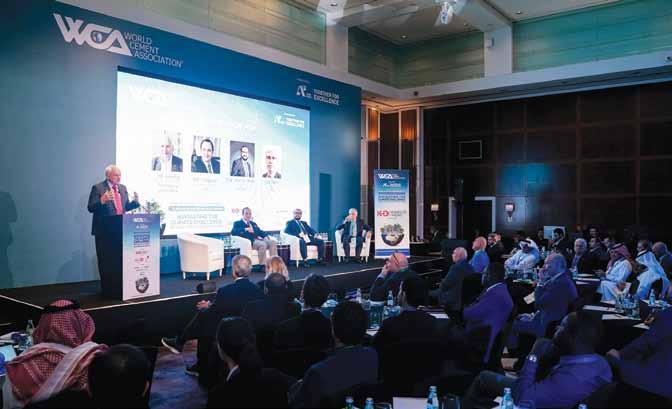 By Eamonn Ryan
By Eamonn Ryan
Ian Riley, CEO of the World Cement Association (WCA) was interviewed by Concrete Trends shortly after the WCA 2022 Annual Conference and Exhibition that took place in person, 25-28 September in Dubai, UAE. It was hosted in the iconic venue of Emirates Towers in the heart of Dubai, enabling delegates to visit one of the most prominent sustainable cities in the world.
Riley spoke on the topic of the sustainability of the international cement and concrete industry. “over a 10-year time frame, the extent of urbanisation occurring around the world implies on the one hand continuing strong demand for concrete in parts of the world like africa and India. on the other hand, there are other parts of the world, notably China, which have entered long-term decline as they transition from a building phase to more of a maintenance phase. In aggregate, we therefore expect the current level of demand to remain at more or less the same magnitude,” says riley.
he notes that in the shorter term, China has in the past year seen quite a sudden drop in demand – having peaked in about 2014 whereafter its market had been expected to gradually decline. “but what’s in fact occurred has been a flat market. Connected at least in part to the government’s zeroCovid policy and associated shutdowns of different cities, we saw short-term precipitous falls in demand of 14-15% – and overall, down by 12% so far this year. looking beyond the immediate situation requires a view on whether or not infrastructure spending will pick up again.”
Infrastructure project rollouts in China had accelerated when Covid hit in order to try and compensate for the resultant economic downturn. “So now there’s the potential for a bit of a hiatus with some of the infrastructure projects that might have been done in the next few years having already been done. I consequently anticipate a sharp drop in Chinese demand and production of cement than we’d previously anticipated,” riley adds.
In DIA A n D OTHER REg IO ns there has been a strong recovery in India after the pandemic following a serious Covid-related drop with a future trend anticipated of strong growth and recovery. “In fact, this is what we have seen in most regions of the world - countries have had a return to their normal growth trend. however, that situation is currently being impacted by higher energy prices, resulting in higher interest rates and weaker economic activity. although we haven’t yet seen that impact in the cement production figures, we can anticipate that a lot of countries are going to experience a reduction in demand,” explains riley.
“Elsewhere, we’ve gone from a situation of tight supply in Europe and North america, to that no longer being the case. there’s no question contractors can get all the building materials they’re looking for at the moment. but there’s cement price increases coming prompted in particular by the increasing costs of energy. that those price increases are not always sticking, reflects the supply-demand imbalance.”
Much of what WCa does is directly associated with assisting its members to reduce their costs and/or to reduce their carbon footprint or other environmental impacts. the most recent initiative was the conference in dubai in September, focused on the Middle East and africa. the next WCa expo is to be hosted in uaE, as riley explains that the motive for the conference in dubai was to disseminate international best practices to cement companies in africa and the Middle East region, particularly the ‘low hanging fruit’ that will easiest enable companies to reduce their carbon footprint and reduce costs. the same motivation of sharing best practices applies to most of WCa’s general activities which revolve around committees.
“Such conferences stimulate ideas, and specifically aim to encourage companies, particularly our members but also non-members, to make a specific commitment on emissions they will be able to make in the short term, before the next conferences. the aim is consequently to get business leaders to understand how this can make a big difference in terms of their costs, profitability and the very viability of their businesses in the future.
“We have some regional members like ppC in South africa which have already made a commitment, and others who are in the process of doing so, but it takes time. the conference aimed at getting this process started among more companies in the region.”
riley then expressed the views of the WCa on realistic climate compatible pathways for the sector around the world, particularly over the coming few years.
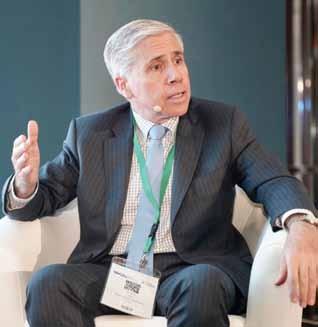
he noted that the cement industry is responsible for about 7% of global emissions, of which a bit less than two thirds comes from raw materials, especially limestone. It is mainly composed of calcium carbonate which in a kiln decomposes into calcium oxide, and Co2 therefore, 1.6 tons of materials such as limestone reduces to one tons of clinker and the difference is fundamentally the Co2 emission, plus the coal and power consumption associated with the plant.
“When we look at how to abate Co2 emissions, there are three levers that have been used historically: • energy efficiency
• switching fuels from coal to something with a lower carbon intensity
• changing the composition of the cement away from limestone so there is less clinker, through the use of supplementary cementitious materials
“these latter materials are primarily by-product’s such as fly ash and blast furnace slag – the two most commonly used to reduce Co2 emissions with the current technologies, before we get into carbon capture. there’s still room to make more progress with these traditional levers. one of the constraints has been the availability of supplementary cementitious materials in some markets, and also national resistance to the use
of a blended clinker in some markets. Nonetheless, the use of blended cement is growing.
“Market and building practice acceptance takes time, as does getting national standards changed. there are materials that are available that have been used historically, but in the large amounts that would be required to make a difference would come at a cost to exploit. there are materials like calcined clays or natural pozzolans which both make quite good cementitious materials and are available in some parts of the world, particularly the Middle East and africa,” he says.
these traditional levers still have the potential to reduce emissions by at least a third and possibly a half between now and 2030, says riley. “but to go beyond that, to look at net zero by 2050 or so – different countries have slightly different targets – the industry has to get into other technologies, particularly carbon capture, either utilisation or storage. these technologies are generally less mature. the basic use of the technology to capture and concentrate Co2, and to transport it to suitable storage locations, is considered to be technically proven, but it’s highly expensive. It needs more development, and more experience of it to bring the costs down to a level that makes it viable.
Fu T u RE I nn OVATIO ns I n CEME n T
“In the broader construction industry, there are many innovations around ‘green’ construction techniques, and the standards themselves keep advancing. It goes beyond standards in some countries like the uk, particularly in london, where if you’re building a new tower block or any aspirant iconic type building, it has to be as green as possible to get top tier companies to consider renting the space. this creates a strong economic incentive in at least a portion of the market, and a combination of that market demand and regulation will over the next few years make this concept the norm in a greater share of the market.
“available green solutions involve using different materials, and being more efficient in the use of all materials. For instance, in a small to medium sized project, the contractor would ideally prefer a single grade of concrete for all applica-
tions, rather than dealing with the complication of multiple grades. From a cost standpoint, that makes sense but when you look at it from a carbon standpoint, when constructing a simple slab it doesn’t require the same quality of cement as for beams or pillars. therein lies the potential to optimise both the cost and the carbon footprint of concrete by matching the application and the mix design. as you go back through the chain, there are those kinds of opportunities for efficiency, all of which is enabled by better technology to help with materials, designs, managing the supply chain and logistics throughout the whole project,” suggests riley.
he lists machine learning is another category of technology that holds considerable interest in sustainable cement production. It assists, for instance, in improving control and reducing fuel consumption in the pyro process of manufacturing cement. WCa has been on a journey with the cement industry for many years to improve control systems, the latest generation of which uses machine learning to try to optimise the conditions. riely says it has the potential for another few percentage point improvements, “perhaps 3-5%”. Efficiency on pyro processing is another example of applying new machine learning technologies to the production process.
“Material technologies include optimising existing materials, such as upgrading cementitious materials like fly ash to replace a larger portion of clinker. In many cases, these upgrade processes are also absorbing Co2 by sequestering Co2 in the product while having a more effective product able to replace some portion of the clinker in the concrete mix. there are also some super additives being put into concrete ranging from plastic aggregates, the use of pampers reinforcing fibre, carbon nanotubes, graphine – all of them at a relatively early stage.”
there is also research and development occurring into the recycling of used building materials, currently a gaping hole in the move towards the circular economy, because they are so hard to recycle. riley explains the latest developments:
“typically, when a building is demolished the materials get mixed together making them much harder to reuse or retain their value, particularly concrete. Even if you can overcome that, you still have a problem that that crushed concrete is not a very good aggregate to use in new concrete. however, we are now seeing a variety of different technologies, or different approaches, to recycling concrete back into the equivalent of virgin aggregates and sand at the same level as the original. and there’s also opportunities even for the cement paste to capture that separately.”
W HAT WCA I s DOI ng s PECIFICALLy FOR A FRICA “the recent conference and follow up activities were all about africa and the Middle East. there are some developments that are particularly interesting in africa regarding the application of new technologies. one of the main challenges in africa is around finding qualified people who are willing to work in the kinds of remote places cement plants are typically located. Some of these technologies - enhanced reality or remote presence technology - allow much more effective remote supervision of technical work, and gives the opportunity to reorganise technical support and engineering services to cement plant in remote places.”
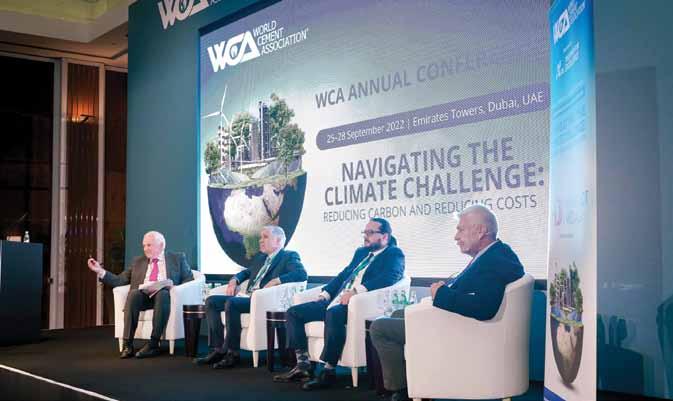
he notes that solutions that are interesting to africa are usually also applicable elsewhere.
“but one of the things that is specific to africa is its limited limestone – there are so many parts of africa that have very little limestone. Some of the developments on cementitious products will consequently be particularly interesting in subSaharan africa, where cement consumption is extremely low on a per capita basis: about 100kg versus the global average of 350kg, though it is much higher in North africa. there is quite an opportunity for increasing volumes of cement. one of the things WCa has tried to do is to inform people of how these new technologies can be deployed,” he adds. n
Western Cape producer members of the Concrete Manufacturers Association took three of the four trophy awards during this year’s (2022) Awards for Excellence Competition.
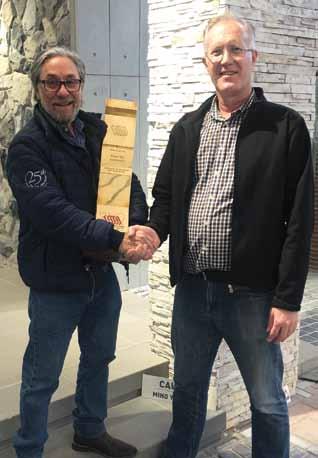
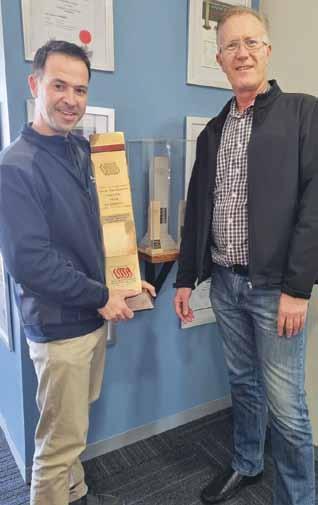
exceptionally over the past four years exhibiting no chipping, cracking or loss of the topping. the pavers can be used in numerous applications where additional delineation is required on roads and parking areas.
In addition to its product innovation award and trophy award, C.E.l. also won aesthetic Excellence paving category for supplying four types of pavers for a driveway at house tara in durbanville.
revelstone also took three awards, a trophy and two category awards. It won the beauty for life category which applies to projects of 10 year or older by entering the paved porte cochère reception area of the Southern Sun Waterfront hotel off lower buitengracht Street in Cape town.
revelstone’s devon cobbles, Jura pavers and Jura Edging were skilfully deployed in a combination with granite inlays in eye-catching configurations. laid by progressive paving, the paving harmonises with the port cochère, using a blend of colours and patterns to create a forecourt with distinct roman influences.
ACMa trophy is the precast concrete industry’s most coveted award and Cape Concrete, revelstone and C.E.l paving products were each presented with a trophy by CMa director, henry Cockcroft, during the second week of September. trophy winners are selected as being the most outstanding examples of applied precast concrete from a pool of the competition’s 16 category award winners.
“Western Cape CMa producer members have always excelled in the competition and this year was no exception,” said Cockcroft.
C.E.l.’s trophy was awarded for its Shimmerstone paver entry in the Engineering Excellence product Innovation category ≤ 100kg, which it won. Shimmerstone pavers are manufactured with a topping of 4-6mm hardened glass chips, sustainably sourced from a glass recycling plant. the pavers refract light making them more visible and have performed
revelstone’s second award was in the aesthetic Excellence Wet-cast stone category which it won for supplying eight different styles of cast-stone paving blocks for the roads parking areas, patios, pathways and staircases at Franschhoek’s prestigious wine and premium five-star hospitality retreat, leeu Estate.
Cape Concrete won the Engineering Excellence product Innovation Category≥ 100kg category for supplying seven roman-inspired precast concrete arches which form the principal architectural feature of baco Estate Winery.
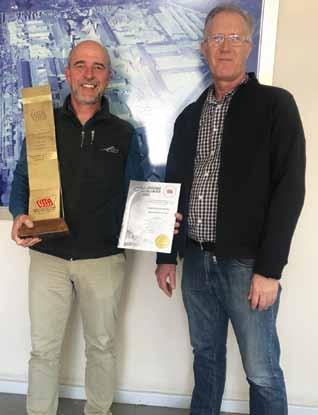
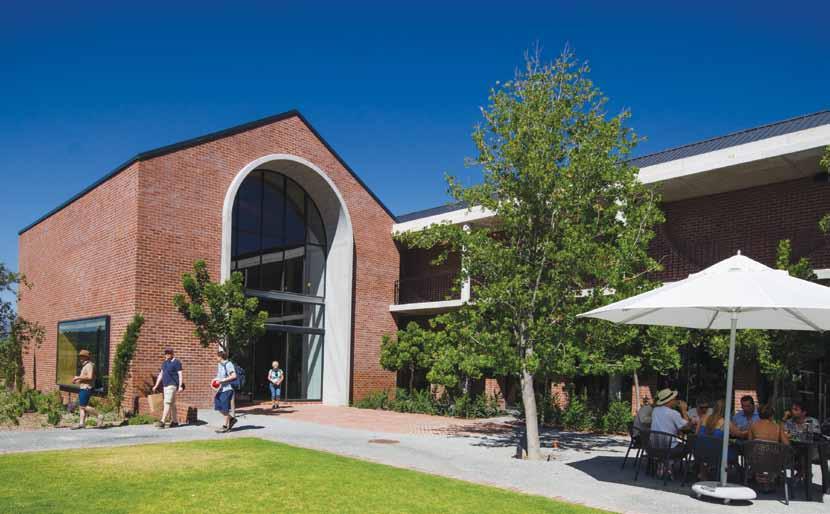
It is an outstanding example of innovative precast concrete technology and the judges had no hesitation in elevating the category award to trophy status.
Completed in January 2022 and fringed by spectacular mountain scenery on the outskirts of paarl, the winery is a three-tiered structure comprising a 1 000m² basement/cellar; a double volume 1 100m² ground floor which houses a tank processing area and a tasting section. the structure also includes a 200m² first floor administration section and a triple-volume glazed atrium.
Cape Concrete director, Johan Nel, said the off-shutter finish achieved with precast concrete is difficult to achieve with in-situ casting.
“It was very important that the finish on the inner side sides of the arches were glass-smooth and we used two concrete mix designs. Moreover, the moulds for the curved sections were made in-house which is an art in itself requiring great skill. the outer surfaces were given a very good steel-floated finish which also required considerable skill to achieve,” said Nel.
the fact that the paved surface has lost none of its dazzling appeal since it was laid in 2012 impressed the judges sufficiently to nominate the project for one of the competition’s four trophies.
First introduced in 1985, the Awards for Excellence competition’s essential goal has always been to salute excellence in the creative use of precast concrete and to honour those involved in its design, production and application. n
Cape-based cast-stone manufacturer, Revelstone, has won three awards in this year’s Concrete Manufacturers Association Awards for Excellence competition. Winning the Beauty for Life and the Wet-cast stone award categories, the former award achieved further distinction by being elevated to trophy status by the judges, one of only four overall category winners to achieve this accolade.
The beauty for life category was created for projects completed 10 years or more prior to an awards competition and revelstone’s 2022 entry showcased the 2012 paving of a vehicle and pedestrian forecourt at the main entrance to Cape town’s Southern Sun hotel in buitekant Street.

the cast-stone producer also took the honours in the Wetcast stone category, in this instance by supplying a range of pavers to Leeu Estates, one of Franschhoek’s most prestigious wine estates and hospitality retreats.
In the Southern Sun hotel project, revelstone’s devon Cobbles, Jura pavers and Jura Edging were specified by louis karol architects and were skilfully deployed in combination with granite inlays in eye-catching configurations. laid by progressive paving, the paving harmonises with the port cochere, using a blend of colours and patterns to create a forecourt with distinct roman influences.
Managing director of progressive paving, adrien desmarais, says that he is absolutely delighted that the project has won a CMa trophy.
“It’s good to know that quality paving products combined with professional execution not only achieve enduring results but can be officially recognised for doing so.
“this was a project which required detailed planning and careful execution. We operated under a tight time constraint and the paving had to be laid in two phases to allow for vehicular and pedestrian access during construction.
“owing to the intricate nature of the paving layout, we paid particular attention to correct and accurate lining and we made sure that the paved road sections were buttressed with solid side-wall support.
“besides natural weathering, one of the reasons for the improved appearance of the cast-stone pavers over time is the
gloss created by the polishing effect of rubber tyres,” explained desmarais
at leeu Estates, revelstone’s pavers formed a natural extension of the extensive grounds and gardens, their colour tones forming the perfect foil for the estate’s plants, vines and sculpted art. Eight types of pavers were selected by the client to pave the estate’s roads, parking areas, walkways, patios and staircases during 2019 and 2020.
paving contractor, derek anderson of highland paving, says that leeu Estates is his most prestigious and diverse paving project to date.
“leeu Estates was very far-sighted in its choice of paving products and they paid particular attention to their installation, with the result that the estate is now an outstanding example of what can be achieved with cast-stone paving,” said anderson.
this is the second CMa trophy awarded to revelstone. the first was won in 2018 for a wall-cladding project at Cape town International airport’s international departures hall.
Family-owned, Revelstone has been producing customised cast-stone products since 1993 for both the domestic and commercial markets. the company uses traditional masonry skills combined with modern moulding techniques to painstakingly produce master moulds from original rocks and stone. this hands-on approach allows the creation of custom-made products, enabling revelstone to supply pavers and cladding uniquely tailored to its clients’ specific requirements.
video recordings of revelstone award winning entries and the other winning entries can be viewed on https://www.cma. org.za/Initiatives/2022- d igital- awards-for-Excellence/2022digital-awards-for-Excellence-Winners-book and on the CMa’s youtube channel. n
During the second week of September, CMA director, Henry Cockcroft, outlined the role that standards, certification and accreditation play in precast concrete during a presentation to delegates at the Big 5 Construction Western Cape exhibition in Cape Town.
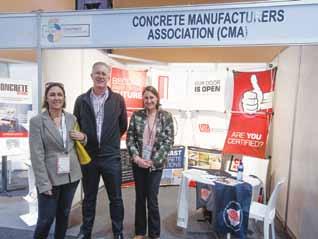
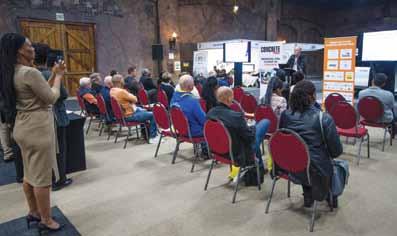
Cockcroft explained the process of how standards are established in South africa. he also cleared up another misconception, namely, in whose name is a standard held. Some still believe that the South african bureau of Standards (SabS) is the custodian of South africa’s standards whereas it is the department of trade and Industry (dtI) which fulfils this role.
“the SabS is simply a service provider to the dtI. It plays a facilitating role in the establishment of new standards and the modification of existing standards, and it participates in workgroups comprised of associations such as the CMa, as well as related producers and professionals. however, once the lengthy drafting and approval process is completed, standards are submitted to the dtI for sign-off by the relevant minister.”
there are currently 16 precast concrete products which carry a SaNS standard and like CMaCS, the SabS is accredited by SaNaS to certify these standards. details of Sa’s precast concrete standards as well as all CMaCS permit holders can be viewed on the CMa website.
“Businesses use standards to satisfy their customers’ quality requirements as well as to ensure safety, reliability and consistency. Standards also ensure compliance with regulations, define and control internal processes, and meet environmental objectives. While most construction professionals understand that standards are essential quality markers, not many could claim to be absolutely clear on how they are established, applied and maintained,” said Cockcroft.
Cockcroft explained that standards are of no benefit unless they are certified. likewise, certification cannot take place unless officially recognised standards which specify materials, quantities, safety and testing procedures, are in place.
he observed that certification is often confused with accreditation. For example, tender documents sometimes specify products which are ‘accredited’ and some manufacturers state that their products are ‘accredited’ both claims being meaningless.
“products cannot be accredited; they can only be certified, verifying that they have met all the specifications of a national standard. Certification is essential in providing precast concrete users with official documentation attesting to the quality of their products based on national standards.
“What accreditation does is legally qualify either people or organisations to perform certain functions, one of which is the assessment and testing of products for certification according accreditation standards (ISO/IEC 17065:2012). For example, the CMa’s Certification Services (CMaCS) certifies precast concrete products which it has been accredited to do by SaNaS (South african National accreditation System).”
Cockcroft also outlined the central role played by quality management systems in meeting national standards and certification requirements and he sketched the audit process producers must undergo before gaining certification for their products.
“there is a strong correlation between quality management systems and the consistent supply of high quality products. producers which adhere to quality management systems enjoy greater customer loyalty and are generally more competitive and profitable,” concluded Cockcroft. n

The big 5, Middle East, africa, and South asia’s largest and most-influential construction industry event, took place at dubai World trade Centre from 5 to 8 december 2022. attracting 2 000 exhibitors and 55 000 global attendees from more than 150 countries, the annual event gathers industry professionals , disruptors, innovators, suppliers, stakeholders, ESg (Environmental, Social and Corporate governance) advisers, and international policymakers. according to abiQ, the event’s knowledge partner, the combined value of projects in the Middle East and africa is uSd6.5 trillion, with uSd3.5 trillion already underway and a
further uSd2.9 trillion in the pipeline. the value equates to 138% of the region’s gdp abiQ adds that the Middle East alone accounts for uSd3.5 trillion worth of the total combined MEa value (Middle East and africa) while North africa is responsible for uSd879bn.
Endorsing the event, the uaE Ministry of Energy and Infrastructure calls for industry collaboration as smart technology looks to shape the future of construction and aligns with the government’s vision and mission towards strengthening the partnerships between public and private sectors. Coming back this year, the big 5 global Construction leaders’ Summit
featured key industry stakeholders and disruptors from outside the sector to discuss new ways forward with a busy day filled with knowledge-sharing to future-proof the industry.
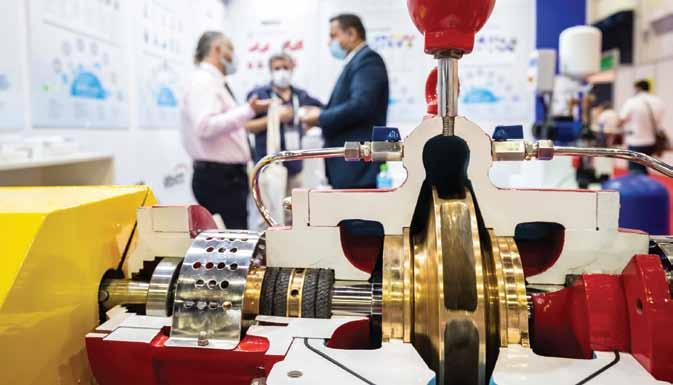
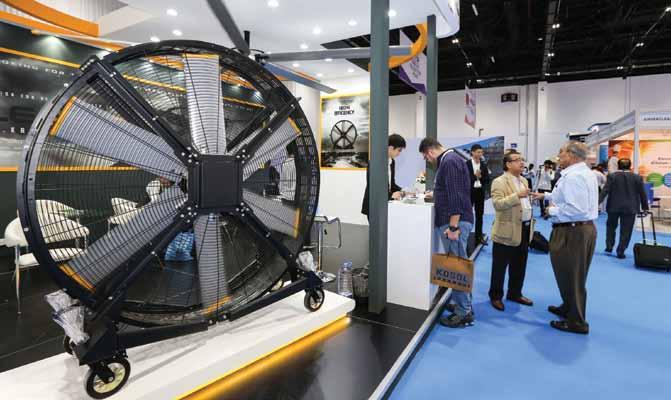
“the government is determined to develop policies, laws, and regulations to support and diversify the national economy by launching integrated investment projects, enabling innovative capabilities, and enhancing skills on the regional and international levels,” said his Excellency Suhail Mohamed al Mazrouei, uaE Minister of Energy & Infrastructure. “the big 5 global Construction leaders’ Summit brings into attention
the critical role the construction sector plays in developing infrastructure and achieving the sustainability of the national economy. It also contributes to exploring prospects for cooperation with our partners to achieve more dependence on modern technologies in the various sectors of the construction sector that have the potential to keep pace with digital transformation, in line with the government’s ambitious vision to realize its future goals and global sector leadership.”
ben greenish, Senior vice-president Construction of dmg events, organiser of the big 5, added: “attendees from
across the region are taking part in vital discussions at the event, where the sector’s global leaders seek to future-proof the construction sector through collaboration, sustainability, and technology. We’re honoured to be partnering with the uaE Ministry of Energy & Infrastructure and to have its support.”
the big 5 focuses on eight major product segments, as well as host six specialised events addressing key construction sectors: Middle East Concrete and the big 5 heavy brings together the concrete supply chain and heavy machinery players; Middle East Stone connects the stone industry in the region; the urban design & landscape Expo highlights new ground-breaking landscape, infrastructure, and urban development solutions; FM Expo connects facilities management professionals with new technologies to support them safely maintaining their assets; and the hvaC r Expo focuses on providing healthy air conditioning for new build, retrofit, or maintenance programmes. the events will be supported by a collection of Cpd (Continuing professional development)-certified talks and summits, providing attendees with insights on the latest market trends and actionable best practices.
aside from the six specialised construction events, Everything architecture consists of innovative and inspiring materials, services and products that are transforming the world’s architectural and design sectors. Exclusively created for architects, designers, specifiers, and property developers, the inaugural event presented revolutionary solutions that can rapidly transform the sector.
“this portfolio of events aims at ensuring participants get to meet the people most appropriate to their specific area of
business, and that visitors can make the most of their attendance by quickly accessing the exhibitors most relevant to their operations,” added greenish.

the show also hosts digital Construction World with Startup City, which saw technology disruptors from nine nations demo solutions in front of construction stakeholders and decision-makers. Competing start-ups proposed solutions for the contech, proptech, infratech, sustainability and energy sectors, while the FutureTech Construction Summit encompasses keynotes and discussions on the impact of technology for the future, embracing and implementing disruptive technology and people, collaboration, and inspiration.
the Middle East holds over 50% of project value, totalling US$3.5 trillion and, as a launchpad for new product launches into the region, urban design & landscape Expo occupies a unique position”
the big 5 global Construction Impact Summit debuted at the event where disruptive thinkers, innovators, and ESg advisers assess the construction ecosystem and collaborate to support the achievement of ambitious regional net-zero targets.
Finally, The Big 5 Construction Impact Awards continued the theme of net-zero and ESg by honouring the people, organisations, and projects that are driving sustainable development, innovation, and transformation in the regions’ booming construction industry. across 17 comprehensive categories, the awards act as a stage to celebrate the achievements and transformation of the construction industry that go beyond traditional measures of project delivery.
“
taking place alongside the big 5, dmg events’ urban design and landscape Expo once again offered industry professionals and project decision makers a dynamic platform to explore business opportunities and source the latest global landscaping, infrastructure and urban development solutions and technological advancements.
urban design and landscaping require significant capital consideration, creative exploration, integration and population of existing or under-development urban hubs and open spaces which will be brought into sharp focus across the four-day event, with visitors able to take a deep dive into the latest international trends influencing this indispensable area of design around the region.
“the Middle East holds over 50% of project value, totalling US$3.5 trillion and, as a launchpad for new product launches into the region, urban design & landscape Expo occupies a unique position as a facilitator for business partnerships across the Middle East’s most future-forward markets. our 2022 edition also provided an impactful content programme, with talks on urban design and landscaping for sustainable development, financing urban infrastructure and integrating water management into urban infrastructure” said Josine heijmans, vp Construction at dmg events.
the event will welcome 70+ specialised exhibitors showcasing urban and landscape design products from 17 countries. Exhibitor categories cover hard landscaping, irrigation and drainage, sports and playgrounds, machinery and equipment, materials and components and specialist sectors, with high-profile exhibitors include bluestream, Eurotec, rakNor, Serge Ferrari Group, Bagatinni, Pasco Paving Stones Co., and therrawood Middle East.
this year’s event also delivered up-to-the-minute market insights and real-world case studies across a wide spectrum of trending topics as part of the free to attend Cpd-certified urban design & landscape talks. key themes for 2022 span principles of urban design and landscape, smart urbanisation and sustainable urban design, with a roster of sought-after speakers including rahaf alkassab, Specialized urban planner, dubai Municipality; Jesper Elsgaard, Chief business officer, photocat a/S; Calum Mcleod, group CEo, glampitect MENa; rony hobeika, Senior urban planner, atkins, a member of the SNC-lavalin group; and hani abdel razeq, associate director/ kSa lead, aESg
the big 5 covers the full construction cycle across dedicated sectors and six specialised events enabling industry professionals to source worldwide building solutions for every stage of construction: the big 5 heavy, Middle East Concrete, hvaC r Expo, Middle East Stone, the urban design & landscape Expo, and FM Expo. n


information about the latest knowledge, skills , market trends and best practices for women entrepreneurs and leaders. We have also launched several cycles of our flagship Mentorship program as well as various accelerator programmes in partnership with multinational organizations as well as entities within the private and public sectors.
In addition, being one of the initiatives of dubai Chambers, the dbWC receives international delegations from around the world and acts as a representative organization of the businesswomen landscape in dubai and across the uaE, paving the way to possible bilateral trade opportunities while also erasing any possible false stereotype that others may have about the women of dubai and the uaE.
wC.
My name is Nadine halabi and I am the business development Manager at the dubai business Women Council. I joined the Council in 2011 and since then I have adopted an intrapreneurial approach to business, which enabled me to continue charting the course of helping working women in dubai develop their skills and abilities through various mentorship and accelerator programmes to continuously support their career and personal development. I have a team of 3 remarkable young ladies who share the same vision, passion, and enthusiasm towards the work we do, and this makes it a lot easier and far more pleasant to implement the mission and vision of the council.
W HAT su CCEssEs HAVE THE DBWC HAD I n RECE n T y EAR s WITH su PPORTI ng g RO u P MEMBER s A n D CHAMPIO n I ng WOME n I n THE WORKPLACE?
Since its establishment in 2022, the council has been providing education, training and networking opportunities to aid in achieving holistic development and meeting career aspirations of uaE-based business women (both Emirati and expatriates).
We curate and put together tailored workshops and seminars, exclusively for our members, to help provide valuable
W
the strategic partnership between the dubai business Women Council (dbWC) and the big 5, one of the most important international exhibitions in the construction sector, is not only strategic but also distinctive and integrated, as we share the same vision.
We, at the dbWC, are tirelessly working and making every possible effort to empower working women and strengthen their competitive edge in the labor market. Similarly, the big 5 embraces innovation to support both male and female employees.
In today’s world, women have become the backbone of nations’ development journeys, and acknowledging that fact, we share with the organizers of the big 5 Exhibition a common vision to support women working in the construction sector and promote the concepts of diversity, inclusion, and trust in women’s abilities to excel in this vital sector.
We are all aware of how important the construction industry is to dubai’s economy and its progress towards building the future. this year, we joined forces with the big 5 exhibition to showcase the pivotal role that women can play in this major industry. We are committed to offering all forms of support to achieve the dbWC’s goals of strengthening the competitive edge of women and upgrading their role in the construction industry.
MARKETPLACE A n D COMM un IT y?
gender equality has become a core value for successful corporations. this applies to construction firms, which must lead by example in supporting gender equality to establish themselves as responsible and distinguished entities.
It is well known that gender equality is not limited to certain sectors, as it is an international concept applicable to all
D O yO u BELIEVE THAT CO ns TRu CTIO n COMPA n IEs PLAy A ROLE I n ADVA n CI ng g E n DER EQ uALIT y n OT O n Ly I n THE WORKPLACE B u T AL sO I n THENadine Halabi
working environments and widely impacting the market and the community.
We all know that women are underrepresented in the construction industry as well as other “ male-dominant “ ones. but we can improve this situation. In my opinion, if construction companies are to successfully implement gender equality at work, they will be better equipped to support and promote this concept in both the marketplace and the wider community because they will be viewed as role models. accordingly, such firms will improve their reputation, demonstrate their leadership, sow the seeds of moral corporate conduct, promote sustainability in the community, and impose high market standards.
yes, the construction and engineering sectors play a fundamental role, and I believe that this role is crucial for reshaping the perception of women’s talents in the respective industry.
W HAT CA n THE CO ns TRu CTIO n I n D us TRy LEAR n ABO u T ADVA n CI ng I n CL us IO n A n D DIVER s IT y
FROM OTHER I n D us TRy sECTOR s?
I believe the construction industry can successfully and comfortably implement the best inclusion and diversity practices adopted by other sectors.
For instance, construction firms can strengthen the sense of belonging at work, provide equal and fair professional development opportunities for all staff, support innovation and creativity among all employees, raise staff awareness of the value of inclusion and diversity, and foster teamwork spirits and cooperation.
If such practices were to be successfully implemented, outstanding results would be achieved, as diversity in the business environment is crucial to fostering innovation and creativity.
recent studies revealed that the top-performing organizations in terms of gender diversity outperformed their rivals by 21%, while businesses that prioritize fostering diversity in the workplace are viewed as responsible and ethical ones. another study conducted by deloitte found that 67% of job seekers view diversity as an important factor when evaluating job offers.
of course, these are some of the advantages of promoting diversity and inclusion. they can all be applicable to construction companies.
H OW CA n THE I n D us TRy su PPORT A n D I ns PIRE THE yO ung ER g E n ERATIO n OF FEMALE CO ns TRu CTIO n prof ESSI on ALS , A n D w HAT CA n MALE CHAM p I on S OF WOME n’s EMPOWERME n T DO TO Fu RTHER su PPORT THEIR FEMALE COLLEAgu Es?
to inspire and encourage more women to work in the construction industry, we should focus on female role models and celebrate them. It is crucial to share success stories of women in the industry to encourage other female professionals to engage in this exciting industry. also, providing training opportunities together with competitive advantages can stimulate and encourage the younger generation of women to join the construction sector.
In addition, male supporters of women’s inclusion must speak up in order to inspire female counterparts to participate in all sectors of the economy; however, competence and experience should always remain the defining factors in the highly competitive market.
the dbWC strongly believes that women are capable of working in all fields and that it is our responsibility to train and sharpen their skills to help them be in a better position to handle all challenges and responsibilities.
H OW DO yO u sEE THE Fu T u RE OF WOME n I n C on ST r UCTI on I n THE M IDDLE E AST DE v EL op I n G , A n D I n WHICH AREA s DO yO u THI n K THE MOs T PRO g REss WILL BE MADE?
“gender equality and diversity in the construction sector in the Middle East are under construction.” It is a work in progress, but I am very optimistic about the future. the upcoming phase will be one of shifting mindsets, innovation, and progress. therefore, we ought to utilize international forums like the big 5 to discuss the key role that women can play in driving the growth of the construction sector and highlight their rising participation on all levels.
Women can work successfully as engineers, architects, construction site managers, quality specialists, and other professions associated with the industry. We must all make sure to offer them the chance to prove their skills and unleash their potential. n
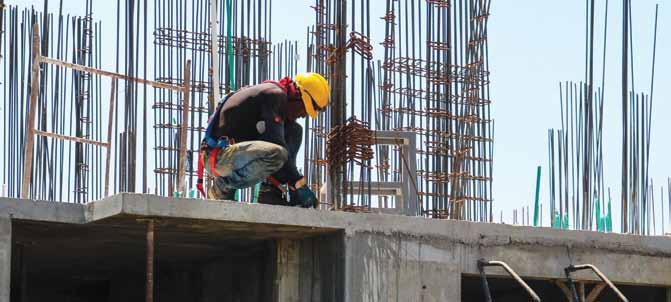
“In terms of inspection equipment, the first step our equipment would be involved in the laying of cement would be as the structure is being built and rebar put in place within the shuttering. often when the concrete is being poured the rebar can potentially move. the Elcometer 331 Concrete Covermeter can be used to check that the reinforcing bar is where it ought to be. the cover should be between approximately 50mm and 70mm thick, and the repercussions of the cover not being the correct thickness can be seen in the sort of rust-looking marks you often find on old buildings or bridges. that is the rebar rusting where the cover is insufficient,” explains duk.
baMr has an instrument – a concrete test hammerwhich tests the hardness of concrete. Its importance is as a quality control tool, by indicating whether or not the concrete has been mixed and cured correctly. this spring-loaded impact device strikes the concrete and depending on how far it rebounds that translates into the Mpa hardness of the structure.
“Coating of concrete is usually more for aesthetic reasons than to protect the concrete. We have an instrument gauge to measure the thickness of the coating – to determine whether the contractor has done their job properly or cut down the number of coats to save costs, because visually there is usually little difference.
“any metal - such as rebar, but more significantly so in the case of say a ship or pipe - that is not coated correctly is going to start rusting earlier than expected.
“then there are moisture meters – before applying the
coating one has to make sure that the plaster or concrete has cured sufficiently and is dry enough so that it can be coated,” says duk. “otherwise the coating may peel and not adhere correctly. We have an adhesion tester for after the coating has been applied to a substrate such as concrete to ensure the coating can stick to the concrete to a force of the correct Mpa which would usually be around 3 Mpa. If it doesn’t, then there is something wrong with the application. this applies equally to walls and flooring.”
While most of these tests are done at the time of installation or shortly thereafter, they also have relevance for building on additional floors. “the consultants would need to establish whether the walls are sufficiently strong to support another story. the cover meter establishes the size of the rebar and strength of the wall.”
duk explains that its testing kit is of particular relevance to painting manufacturers and contractors, given that “when something goes wrong they are the first people to be blamed as being in error at the time of application, when in fact it may have been the underlying concrete surface”. It may be that the concrete substrate was not prepared correctly or there was excessive moisture. What is ideal in this situation is a climate monitoring device which can be placed on location throughout an application process and shows whether the climate at the time of applying the coating was within specifications, usually determined by the paint manufacturer.
“South africa is well behind the uS, for instance, from a legal point of view – because the likelihood of lawsuit will determine how a contractor performs. n
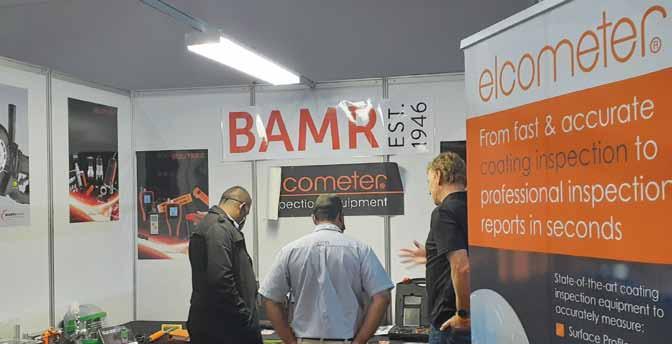
The definition of corrosion is a chemical or electrochemical reaction of a material with its environment. In the broadest sense of this definition, it applies not just to metals, but any material including plastics.
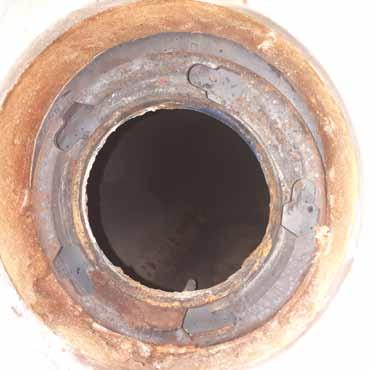
“Corrosion – or in the case of iron and steel, we call it rust – is everyone’s problem. that’s because the cost of corrosion to the global economy is astronomical. Corrosion is the most pernicious occurrence known to mankind – more insidious by far in terms of loss than many natural disasters. research has shown the direct cost of corrosion world wide (which is the replacement of materials and their installa tion) is about 4% of global gdp lost every year. In total, this has been estimated at US$4 trillion each year,” says Combrink.
“Wits university did some local research in the 1990s and found the South african equivalent loss to be higher at 5.2% of gdp – which is equivalent to the revenue of the entire South african mining industry. this amount of approximately r260 billion (or r4 400 a year for every resident of South africa) is lost every year – just as a direct result of corrosion. quarter or more of this amount could be saved just by using existing technology
“In addition, there are also even larger indirect costs such as interruptions in factory production, as well as environmental damage through carbon dioxide produced in replacing the steel, or toxic liquids escaping from a tank or pipeline which has sprung a leak from corrosion. the rule of thumb estimate is that the indirect cost is about double the direct cost. there’s also considerable loss of goodwill that can come from a leak from a sewer drain that subsequently leaks into our rivers,” says Combrink.
P REVE n TATIVE ACTIO n “one of the methods to reduce corrosion is by the application of an organic coating. paint is applied not just for the sake of appearance, but also as a protective barrier against the environment.
Combrink adds: “We promote research and recognise innovations in the field of corrosion prevention. It’s not just metallurgy and chemistry – it involves electrical engineering as well. In civil engineering, if the rebar inside a concrete structure starts to corrode it creates an increase in volume which causes the concrete to crack, leading to consequences as severe as the building collapsing.”
he notes that concrete has reinforced steel bars on the inside, which can corrode as a result of the lowerh of the concrete by attack from for example. “Concrete is cast about this rebar and in between the rebar cage to fill all the gaps. Concrete is a composite material, comprised of cement, water, aggregate and steel. It never really dries out completely – holding about 25% to 30% water, only after 100 years or so dropping to about 12%.”
the ph of concrete is highly alkaline, he explains. Steel embedded into concrete reacts to form passive layers on the surface, which is actually corrosion. “It forms an oxide layer which tenaciously clings to the surface and prevents any further interaction between the surface and the environment. If it gets damaged it in a certain area, it can either selfheal and re-form, or can form a localised corrosion spot. this is an extremely dangerous type of corrosion, because if one had to lose five grams of material over an entire surface one could deal with it - but to lose five grams only in one spot causes a lot more damage to the extent the entire support structure will be at risk of collapsing.”
With time, and with exposure to different environments, particularly carbon dioxide and chlorides, the ph level of the concrete lowers. the steel ceases to be passive and the volume of rust increases. “the volume increase inside the steel now places the concrete prism under tension. Concrete is good under compression, but not under tension.”
“Where there was previously a thin bar, because it’s corroded it increasingly pulls the concrete apart, developing spalling – or cracks in concrete through to the surface. once that occurs, other contaminants and water can get in accelerating the corrosion. Chlorides also tend to break down the
passive layer, so if you have chloride in your concrete mix, and unless you have additives to inhibit it, you will get a similar attack on the rebar and expansion of the rebar volumes,” Combrink adds.
Some of the accelerants added to concrete to make it cure faster are chloride-containing materials. “It’s a balance – one wants it to cure faster, but not to corrode. typically, we build buildings to last 100 or even 200 years. acid rain also plays a part in attacking concrete and other structures. “It’s exothermic - it gives off energy spontaneously. gases are emitted from some various large industrial enterprises which accelerates corrosion.
Combrink explains that if one does nothing, corrosion is inevitable as it’s thermodynamic. Everything wants to get into the most stable state, including the rebar inside the concrete. the process of making steel is to dig iron ore out the ground as an oxide where it’s been there for billions of years in the most stable state. It is put into a furnace, carbon or coke added and heated to reduce it to pig iron, which in turn is converted to steel. all of this adds energy to the steel.
“and all it wants to do is return to its lowest level. the same thing happens with the rebar inside concrete – it wants to return to the lowest energy level. In the particular environment of concrete with its high ph, it’s passivated and stable. but if that state changes either through carbonation or chloride ingress, it reacts to corrode (return to its natural lower energy state).
this occurs especially at the coast, where you’ve got chlorides blowing off the sea embedding into the concrete and attacking the rebar. It is also the case with roadways, carbon dioxide formation from burnt fossil fuels gets into concrete in a process called carbonation though its typically porous matrix.
typically, the coverage of rebar at the coast must be a minimum of five centimetres. “that’s in the design stage, but when you get to the actual practical implementation of a crane lifting the rebar, things move and you sometimes don’t get the total coverage wanted. So, one should design for six centimetres, and then you have more ‘play’ to work with.
“there are also other methods of doing it, such as the use of inhibitors. one type of inhibitor called a vapour phase corrosion inhibitor (vpCI) even has the ability to protects steel both above and below the waterline. Such vpCIs, when dissolved in water will vaporise from the water saturating the air the phase above it resulting in protection from corrosion both in the liquid and in the air. We can do the same with concrete by adding inhibitors to the mix.”
that concrete inhibitor technology is owned by Cortec, in the form of a migratory corrosion inhibitor is added to the concrete mix. It congests the pathways of where the aggressive agents such as chloride would start infesting the porous structure, slowing the corrosion process.
to extend the life of concrete against the inevitable process of corrosion and decay, one can add inhibitors in the premix, or apply an electrochemical technique called cathodic protection. because there’s 30% moisture in all concrete, one can now make that rebar to be a non-corroding material by forcing a charge onto the surface where a corrosion cell has formed. Concrete’s moisture level means the concrete itself provides the electrolyte needed.
“For corrosion to occur via an electrochemical process (which is most common), the corroding area of the metal being attacked is the anode that dissolves away while the noncorroding area is where the cathodic reaction occurs on the surface and no damage is evident. there has to be an electrical conductor which can conduct charge by electrons and a return path usually an electrolyte to close the loop for the charge. In practice if a water droplet from rain forms on exposed steel, one part of that steel under the water drop becomes the anode and corrodes and another part becomes the cathode that doesn’t get attacked by corrosion.” Combrink adds.
Solutions include painting the rebar with a resistant coating before placing it in the concrete. Few people do it, and Combrink says a ‘cultural change’ would first need to occur.
the Corrosion Institute believes there exists “a huge gap for the restoration of concrete in buildings”. Combrink explains: “you can do more than just add MCIs to the premix: you can come back to a building afterwards and retroactively apply it every three or four years to the outer surface on the building. It will seep in and stop any corrosion taking place on the rebar.”
the Corrosion Institute’s objective is to raise awareness of corrosion and also to provide training so that companies can monitor their own plant, equipment and infrastructure, thereby reducing the economic impact of corrosion. It is also a networking organisation for people to exchange ideas on their corrosion challenges. “by raising awareness, we aim to get people to understand that damage caused by corrosion is not inevitable. there is an engineering aspect to designing infrastructure, and by implementing appropriate methods there are to stop corrosion ensure it will last as long as is required and will not fall victim to it,” says Combrink. n
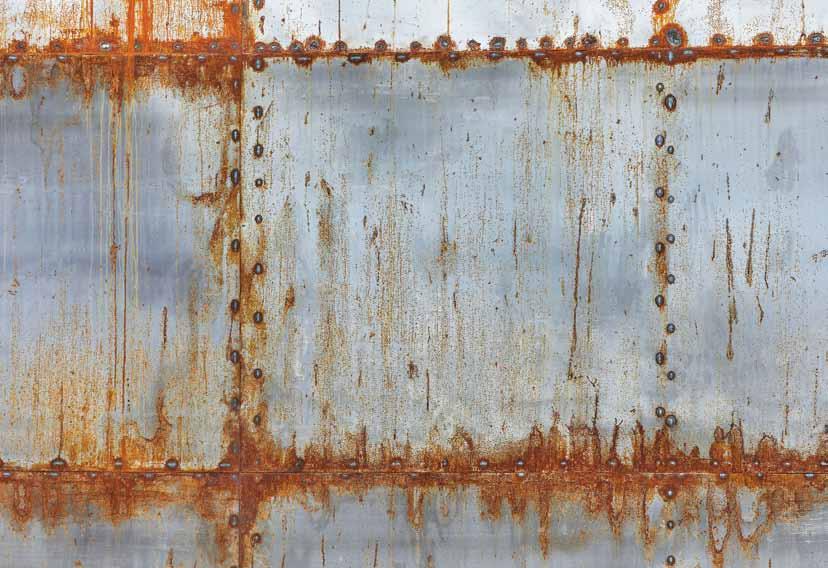
 By Jan de Beer, on behalf of Cement & Concrete SA (CCSA)
By Jan de Beer, on behalf of Cement & Concrete SA (CCSA)

The durability of concrete is exceptional and well-known but sometimes concrete casting defects and other operational errors can cause unsightly superficial surface
Firstly, repairs to new concrete should be done as soon as possible after the formwork has been removed to reduce differential shrinkage and improve the bond between the original concrete and the repair material. before doing the repair, all dust and detritus must be removed from the surface to be treated by, for example, washing vertical and near-vertical surfaces with clean water.
For manual repairs, suitable for small areas, feather edging – trying to seamlessly blend the repair material into the existing concrete – should be avoided. the outline of a repair should be cut with a masonry cutting disc or saw to ensure a square edge.
good adhesion between the original concrete and the repair material is essential and, to ensure this, the surface of the original concrete must be strong, rough and clean. any loose or weak material must be removed with sharp chisels, driven by relatively light hammers. but it is important to remove the unwanted concrete in such a way that the remaining concrete is not badly damaged. Sand‐blasting, which can remove small volumes of concrete, is an excellent means of achieving a rough surface free of loosely adhering material.
In cases where the repair areas are large (say over 0.1m2), and especially where persons could be injured by falling fragments, it is strongly recommended not to rely solely on adhesion between repair and background concrete but to provide mechanical fixing. Such fixing

should be done with corrosion‐resistant metal devices such as screws or rods, preferably of stainless steel. Fixing devices should be installed after the surface preparation is complete but before the surface is cleaned.
to ensure strong adhesion of fresh concrete or mortar to a substrate of hardened concrete, the substrate should have enough suction to absorb the water film at the interface but should not desiccate the repair material. this limited suction can be achieved in different ways, depending on the age and density of the concrete. If the concrete is fairly new ‐ say within 48 hours of being placed – simply allowing the surface to become visibly dry should suffice. Concrete with low absorptiveness does not require pre‐wetting and should be repaired in a dry state.
the substrate should be primed with a slurry immediately before the repair material is placed. the primer slurry should be a mixture of equal volumes of cement and dry plaster sand with sufficient water to achieve a “paint consistence”. Neat cement paste is difficult to mix and is therefore not recommended. polymer emulsion may be added to the mixing water – one part emulsion to two parts water is usually satisfactory. primer slurry must be applied as a thin coating to the substrate using suitable brushes. do not allow primer to accumulate in depressions in the surface and prevent the primer to dry before applying the repair material. priming must therefore be done immediately ahead of repairing and is best done over a small area at a time. polymer emulsion on its own must never be used as a primer.
older concrete should be assessed for absorptiveness by wetting the surface: if the water is rapidly absorbed, the rate of absorption would be too high; and if the water is hardly absorbed, the rate is too low. Concrete with high absorptiveness should be saturated for some hours before repairs are be carried out. Surface water must then be removed and the surface allowed to become visibly dry and repairs undertaken straight away. remember never to attempt repairs to concrete that has a water sheen.
good compaction is essential in concrete repairs. Semi‐dry mixes must be compacted by heavy tamping and plastic mixes applied with heavy pressure on the trowel or spatula. Where appearance is important, repairs should be finished to match the texture of the surrounding concrete using tools such as wood floats, steel trowels, sponges, wire and nylon brushes. If colour matching is essential, it should be noted that repairs tend to be darker than the original concrete when dried out. So, white portland cement may be substituted for about a third of the grey material if such a colour match is required. the optimum substitution ratio should be determined by test: carry out a repair in an unimportant area and assess colour once the repair material has hardened and dried.
repairs must be moist cured for at least seven days. plastic sheeting, fixed along the edges to the concrete with pressure‐sensitive tape, is effective to trap moisture and ensure adequate curing. good quality membrane‐forming curing compounds may also be used but remember that drying of the concrete repairs may be retarded if these curing compounds are not removed from the surface.
after completion of the curing period, polymer‐modified repairs must be allowed to dry out completely before being subjected to wet conditions. this allows the emulsion to coalesce and become water‐resistant. n

We always look at two main sections of legislation in the Occupational Health and Safety Act of 1993 (OHS Act), these are Sections 8 and 14. These discuss the duties of ‘Employers’ and ‘Employees’ respectively toward occupational health and safety while performing work.
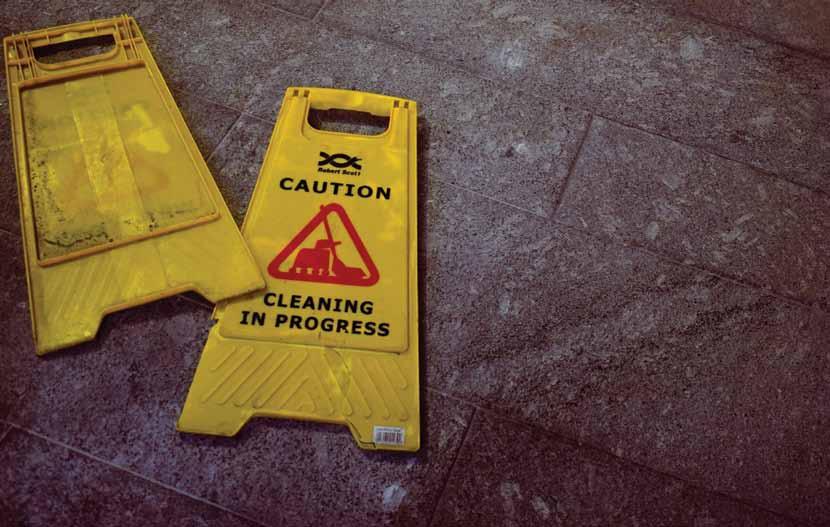
L Eg I sLATIO n the objection of the ohS act is “to provide for the health and safety of persons at work and for the health and safety of persons in connection with the use of plant and machinery; the protection of persons other than persons at work against hazards to health and safety arising out of or in connection with the activities of persons at work…” both employers and employees have a duty toward ohS while working with a concrete mixer. let’s us look at a few items that all employers and employees should keep in mind when working with a concrete mixer. It is of vital importance that all legislation, standards and manufacturing standards are considered and planned for when deciding whether to use a concrete mixer and these must be considered and complied with.
a competent person in charge of the mixer inspection must ensure that they perform the inspecting correctly, as well as take into consideration certain fundamental items such as: • The mixer must be inspected before use for wear, damage, cracks and breakages
• The engine must be checked for oil leaks, petrol leaks and anything else. all oil, petrol and hydraulic levels must be checked and filled to the correct indicated level.
• Clean the mixer after use and ensure it is safe to do so. Water conducts electricity or a hot engine
• Do not clean or undertake maintenance while the drum is rotating or the hopper is being operated
When concrete mixing on site, there are a few methods that can be utilised or implemented on site. We will discuss just one of these methods in this article, concrete mixing with a mixer on site.
the following are the major components of the concrete mixer:
Tilting wheel: the lifting wheel is used to rotate the drum when charging or discharging the mix.
Drum: the drum rotates to mix the content. Inside the drum is a spiral plate or plates to agitate or mix the content. the drum is driven by a motor via a mechanical drive, varying from make to make.
wheels: the wheels can be pragmatic or solid steel wheels. It makes the mixer transportable to easily move around or to be transported. a fully mixer can be top heavy or lopsided
(unstable) when the hopper and / or drum is full and should not be transported in this state. always ensure that the mixer is level when used.
Hopper: the hopper is used to pour the mix into by means of wheelbarrows or manually. the hopper is tilted hydraulically or mechanically such to pour the cement, stone etc. into the drum. always ensure enough space to operate (lift) the hopper with safe clearances.
Engine / motor compartment: the driving force – the electrical motor or engine - is located in the compartment. the motor/ engine and the drivetrain to the drum, and hydraulics when fitted, must be checked and maintained before use. Control panel: the control panel contains the start/stop of the mixer (rotation) hydraulic or hopper control.
Mortar: Mortar will be type M and shall conform to (Standard Specification for aggregate for Masonry Mortar) aStM C270. type M Mortar will have proportions of one part portland cement, a quarter part hydrated lime, and three and a half parts sand by volume. It will be freshly prepared and uniformly mixed and be of spreadable, workable consistency. Mortar should be re-tempered with water as required to maintain high plasticity, re-tempering on mortar and the mortar worked into the water. do not use any mortar which is unused after one and a half hours from the initial mixing time. after all ingredients are in the batch mixer, they must be mechanically mixed for not less than three minutes. It is prohibited to use fire clay, rock dust, dirt and other deleterious materials in mortar. Sand for mortar must conform to aStM C144.
Aggregate: For the purpose that aggregates are used for support, infill, and embellishment, they need to undergo special, complex treatment. aggregates deposits quarried across the world vary considerably from a geological point of view. the choice of deposits to be quarried is based on a compromise between proximity to consumption centres, the impact of each site on the environment and the quality of the aggregates. there are three major sources of supply: unconsolidated or loose rock – sand and alluvial materials; solid rock – limestone and hard rock or crushed volcanic rock; and recycled materials. because of the growing shortage of deposits such as alluvial aggregates that used to be in riverbeds but begun to run out, the quarrying of solid rock has increasingly offset that of unconsolidated rock. all aggregate for mortar and grout must be well graded, clean, free of injurious amounts of dust, lumps, shale, alkali, surface coating, organic matter and sharp.
Grout: grout must have a minimum strength of 2 000 psi and must conform to ASTM C476. Fine grout must be proportional by volume of one part portland cement and two and a quarter to three parts sand. Course grout must consist of one part portland cement, two and a quarter to three parts of sand, and one to two parts coarse aggregate. It must be proportioned by volume. If the minimum strength is more than 2 000 psi, laboratory design mixes are required and acceptable in lieu of the above proportions. aggregate for masonry grout must conform to aStM C404.
Admixtures: the use of admixtures will only be permitted in mortar or grout if approved by the engineer.
Lime: Quick lime must conform to aStM C5, and hydrated lime must conform to aStM C207.
water: Water must come from domestic supply and must
be free of deleterious quantities of acids, alkalis, and organic materials.
sAFE WORK PROCED u RE
• Allow enough safe space between mixer and persons, machines, buildings etc
• The area between drum and frame must be guarded
• When transporting a mixer down an incline shaft a solid draw bar must be fitted, and great care must be taken as the mixer weights almost 1.5 ton
• A concrete mixer can be unstable during operation and transport as its centre point of gravity is low
• Do not overload the drum: normal capacity is around 600 litre and the drum will overflow if overloaded
• Only authorised persons must operate the mixer as any other person does not know how to safely operate the mixer
• Do not leave a working mixer unattended
• Secure/ remove the hopper when transported
• Secure its wheels so that the mixer does not move when operated
• Ensure proximity hazards are checked out for dangerous cases, electrical, building site, ground conditions and the like
• Ensure the electrical cable and plug, if applicable, is sound and safe
• Do not try and alter the direction of rotation when the drum is in motion
• Use all required personal protective equipment (PPE)
• Ensure the mixer is properly lashed and chocked when transported. n

In the next year and a half, all States Concrete Equipment based in australia aims to achieve the milestone of 80% of its products being manufactured in-house in australia. the corporate strategy of all States is to get its brand globally known, says. “part of our brand is to ‘concrete the world’.
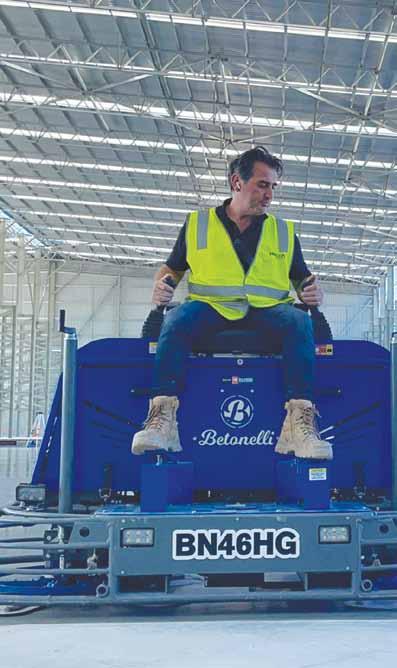
We want to be the best leaders in the market with anything that we do with concreting, including training, consulting – in every aspect of the business, we want to be number one.
“We have big expansion plans: we’ve already covered all Southeast asia, the Middle East, South africa, New Zealand and australia, with our next target being america, which we’re working on right now.”
In addition to manufacturing its own products in-house, all States Concrete Equipment is the distributor of ligchine equipment in africa, the Middle East, asia, australia and New Zealand. Florio explains that Ligchine designs and manufactures highly reliable laser-guided screeds using cutting-edge technology to automate the process of flat finishing concrete. ligchine equipment is essential to the construction of every structure, building, warehouse or facility that requires a flat floor. ligchine’s product portfolio is comprised of a full line of high-performance boom-operated screeds and a new revolutionary drive-in machine that offers the greatest mobility and highest flatness numbers ever achieved by a drive-in machine. all machines can be custom-configured to operate with multiple machine control systems including laser, gpS (satellite) and lpS (robotic).
“this is a tough market that you have to be constantly working on at. the asian market is like africa in that they won’t buy the most expensive machines - but they’re changing right now as we speak as contractors seek to grow.”
he describes the first baby steps any contractor has to take in making the leap to automating flooring: “they’ve got to have a team with adequate knowledge of, let’s say, flat floors. that’s the point at which we come in to show them how they can do it better with the systems we implement.
“We’re mainly in the construction of warehouse floors using mainly laser screeds – but really anything from hand tools to laser screeds, which is very important equipment for flat floors. a discussion about equipment has to always centre on customer relationships before we ever talk price. only when a customer is serious and understands the equipment, can the subject of prices be broached. pricing can be scary unless a contractor has an aspiration to build warehouse floors and be among the top five contractors in their country, for instance. If they get demotivated by price right from the start, their dreams may get shattered,” says Florio.
“So you have to explain to them that a machine like a laser screed, costing aud250,000 in australia, which people consider really expensive, increases efficiency and saves labour costs enormously. a 1000m2 which would ordinarily require 10 people to do can now be done with five, allowing the other five to switch to another job. If one takes the cost of those five men over a year, it’s double the cost of the machine. that con-
cept is easy for a businessperson to understand – he’s outlaying quarter of a million but saving half a million.
“We work in Indonesia where there is very high unemployment and creating jobs is their no.1 priority, and they still recognise the economics of mechanising in instances where there are large projects with a timeline. If you have a machine that can speed up that timeline, you can then allocate your spare men to different areas, whether it’s boxing up a slab, or putting reinforcement on the ground,” he explains.
It’s about efficiency and quality. Worldwide, people want quality at an affordable price.
rESEA r CH , DISC ov E ry A n D T r AI n I n G“at all States, we’re constantly thinking about the outside of the box, and that is my personal responsibility within the company because I’ve been a contractor. I have silica fumes running through my veins and have been in concrete all my life, so I know what a contractor wants. For instance, with our concrete trowel machines – we look at how we can be better than anyone else. We came up with the idea of a vertical trowel machine, also called power trails, helicopters and choppers – various names around the world.”
Every country is different. Florio explains that many countries in asia don’t use cranes for lifting machines like the big ride-on power trowels. they are very heavy, starting from 230kg to 800kg – and the majority of asian companies don’t have cranes to lift them up. “We had to innovate to see how we could help these companies efficiently and cost effective, because having a truck with a crane is very expensive.
“let’s say someone wants to be a bit more adventurous in business and wants to do something different - like a super flat floor. they may need to put a dry shake hardener on top of the floor. Some people throw it on by hand like they’re feeding chickens. We have machines where we put all the hardener in a tub which can be walked along rolling evenly. there are also boom operated machines with the boom protruding up to six meters dry shaking the hardener evenly,” says Florio.
training is specific to each machine and is central to safety. “First of all, safety is critical and customers need to be made aware of the hazards of any machine, from a hand tool’s sharp
blade through to the laser screed, where getting crushed or run over is the threat.
“I travel the world doing this now. the company has local partners in various countries such as Indonesia and South africa. For us, it’s not just about selling a machine, we sell a solution – and that requires an ongoing relationship to constantly determine their needs.
Florio explains that he’s been contracting since he was 19 and in flat floors for 25 years. “When I acquired my first laser screed about 25 years ago, I only had six employees. and that laser screed cost me A$600,000 back then. That grew my business rapidly to having four laser screeds and 40 employees, including subcontractors. I was able to grow the business through the quality of my work and understanding that when you have a machine like the ligchine people start looking at you differently, as if to say they know the quality of work that it can do. I grew a small business to a large one, and that’s what we help other small businesses do. a developer or builder knows it can get a cheaper price from them compared to the high-end guys - and that’s how small businesses grow. We target the smaller businesses to help them achieve what they want to achieve and grow.”
Each country is a completely different market. Some contractors have all the equipment, but the most important are the laser screed and trowel machine. “there are contractors that still screed concrete by hand or still use power trowels or walk behind power trowels and have a measuring tool for flatness. In contrast, with a laser screed it is a package that does everything at once.
“there are contractors that want equipment that can do everything, and others that also want to do everything but can’t afford it. but they will at least want the equipment to measure the floor.”
he notes that even a laser screed cannot be 100% perfect. “you still have to be vigilant for ‘what ifs. What if one of the laser rides breaks down? you need spare parts, and what is the site carrying on the day. you can never just use a machine and not worry about maintenance or spare parts.” n
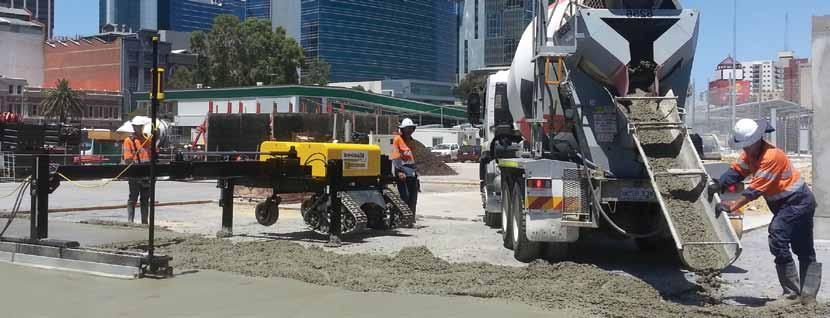


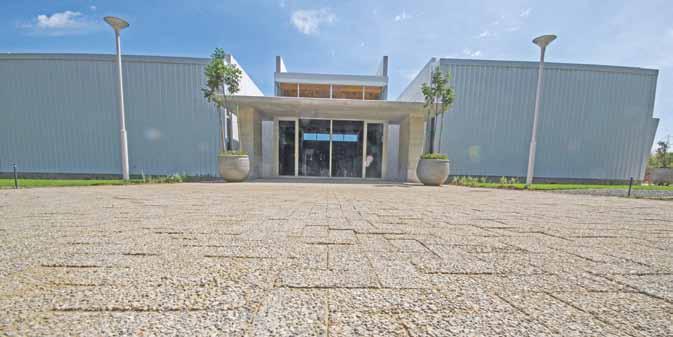 By David Beer on behalf of Concrete Manufacturers Association (CMA)
By David Beer on behalf of Concrete Manufacturers Association (CMA)
The landscaped area surrounding the recently-built motor museum at Lourensford Wine Estate in Somerset West, was completed in October. It comprises an orderly combination of exposed aggregate paving, cobble paving, gravel-covered paths, grass, potted plants and flower beds.
Concrete Manufacturers association member, C.E.l paving products, supplied 500m² of its brownstone course exposed aggregate paver which was used to pave the vehicle entrance areas at either end of the building and a section flanking the museum’s main entrance. C.E.l also supplied its bond paver which was used as the paving’s header course.
Museum architect, anton heyn, said he specified C.E.l.’s brownstone paver as one of the main landscaping elements because it is an attractive and durable non-slip product which complements the site’s other landscaping elements.
“the paver is embedded with natural stone which adds a natural look and feel to the museum’s landscaping ‘language’. We could have specified an in-situ paving installation but given that the site was built with several services which require maintenance or add-ons from time-to-time, paving blocks proved to be the more practical solution; they can easily be lifted and replaced without damaging or marring the paved surface.”
the paving work was executed by the project’s main contractor, buildaway. the layer works comprised a compacted sub-grade, 150mm of g5 aggregate and 20mm of bedding sand. n
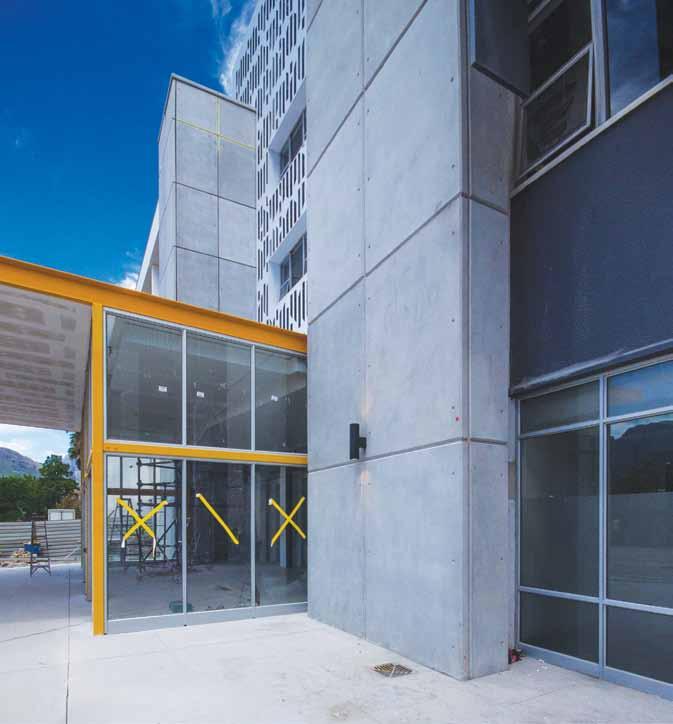 By David Beer on behalf of Concrete Manufacturers Association (CMA)
By David Beer on behalf of Concrete Manufacturers Association (CMA)
Reinforced precast concrete facade panels, manufactured by Concrete Manufacturers Association member, Concrete Units, have been used to dress the external elevations of two U-shaped service shafts which flank the northern entrance of Stellenbosch University’s Civil, Electrical and Electronic Engineering building.
The installation forms part of an overall face-lifting and refurbishment of the five-storey structure which is being undertaken on behalf of the university by main contractor, gvk-Siya Zama Construction, in collaboration with project architect, kMh architects, and structural engineers, Edifice Consulting Engineers
Forty panels in six sizes were attached to each shaft’s three exterior elevations over eight segments, five panels dressing
each segment. all the panels are 2.2m high, apart from the top or eighth segment units which are 1.4m, and they all vary in width from 400mm to 1 700mm. the front or north facing elevations of each shaft took 16 panels as did the two inner side-facing facades. the two outer side-facing elevations were each dressed with eight narrower panels.
r ynhard Zwarts of kMh architects said he specified precast concrete panelling for the service shaft facades to create
a point of interest at the building’s northern entrance and because precast concrete has a much cleaner finish than insitu concrete.
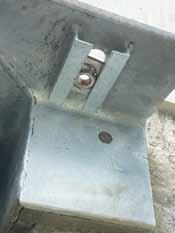
“the finish on Concrete unit’s precast panels is beautiful and panelling emulates the facade of the New paving laboratory (Npl) which is adjacent to the engineering building. We established a language of materiality for the Npl which is being adopted for the engineering block’s northern façade. Moreover, we requested that the panels be cast with ferrule holes as cosmetic embellishments which mimic the holes in the in-situ concrete finish of the Npl,” said Zwarts.
housing the building’s distribution boards, the shafts comprise reinforced concrete walling on the front and outer elevations, and reinforced concrete with a brick in-fill walling, on the inner-facing walls.
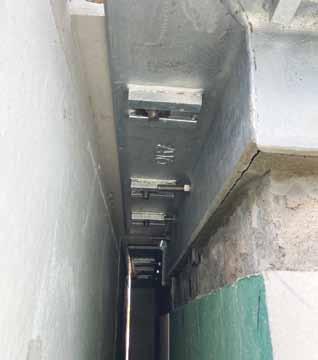
Edifice structural engineer, r yno thiart, said that one of the main challenges was establishing the most effective method of attaching the panels to the walling.
“We were fortunate in that the shafts are housed in a reinforced Concrete (rC) frame which meant they had the strength to support the precast panelling.
“our design geometry embraced kMh architects’ visual input as well as practical installation considerations, and was premised on a shared panel loading between the reinforced concrete corbels, attached to the bottom of the existing
concrete shafts, and galvanised steel angle brackets, which were mounted on the shaft walling. the angle brackets were designed for lateral connectivity and for handling the panels’ vertical loading in the event that some loading would not be distributed to the concrete footings. In addition, the corbels were designed to support the total vertical panel loading. apart from the base level panel sections which rest on the corbels, each panel section sits on the segment below through keyway joints cast into the panels.
“We kept the weight of the panels to a minimum to reduce the loading. and we made the panel walls a relatively thin 100mm because they are not subject to the same forces as the end sections which were required to be thicker for bracket hanging and inter-panel connectivity,” advised thiart.
once the ground level facade panels were installed by vbd Steel Construction, Concrete units took laser levels and calculated bracket positions. this process was assisted by the fact that the building had been constructed to very tight tolerances in the 1970s.
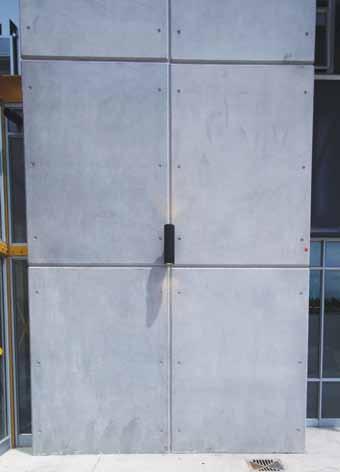
“the structure and brickwork were within a 5-10mm tolerance which one rarely sees these days,” said Concrete units production manager, alwyn Carstens. “this meant our lines and levels worked out very well and allowed us in turn to operate within tight tolerances.”
Scaffolding with platforms in line with each segment was erected around the shafts which made the installation process relatively easy. a 25 tonne mobile crane hoisted the panels above the top of the scaffolding and lowered them between the scaffolding and the walling onto the angle brackets.
the panels were cast with corbels/beams which run the full width at the top of the panel and provide a 170mm anchor ledge for hanging them off the steel angle brackets. In addition, v-shaped grooves were cast into the top of the corbels and v-shaped ridges were cast into the bottom panel beams to facilitate the keyway connections.
gvk contracts manager, deon terblanche, said that in order to achieve the shared load
One of the top level panels cast with a recess to fit around the concrete beam at the top of the building.
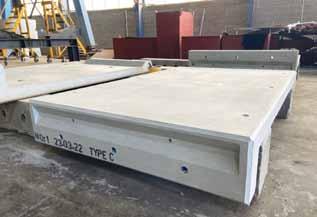
distribution between the brackets and the panels, hdpE shims were inserted between the brackets and the corbels.
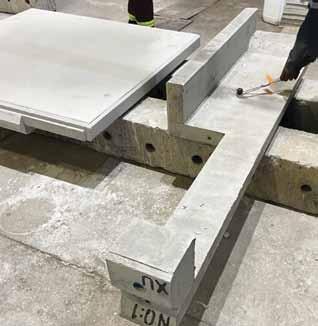
“Shim placement involved lifting the panels off the brackets to provide access. the brackets were installed 10mm below their designated levels to allow for the height and load-sharing adjustments. In addition, rubber sealing was used in the keyway joints to further assist with the alignment process and ensure tight joints.
“once the panels were aligned they were permanently secured to the brackets with 20mm stainless steel bolts. Each bracket was purpose made, because once the panels were installed there was no space to secure the bottom nuts in position while the bolts were tightened from the top. to overcome this problem purpose-made square nuts were used; they were kept in position by steel guides welded to the underside of the angle and the angle bolt holes were slotted to allow for the lateral alignment and adjustment of the panels. Further bolt insertion flexibility was provided by Concrete units casting extra-large 40mm bolt sleeves in the panel corbels,” said terblanche.
the angle brackets were attached to the rC walls with stainless steel bolts. they penetrate through to the back of the rC walls where they are secured to purpose made steel square washers. In cases where the brackets were close to shaft corners, chemical anchoring was used.
the in-fill brick walls were not sufficiently strong to support the eccentric vertical panel loading, therefore channel brackets were attached on the inside of the building to two existing rC columns which flanked each infill wall. Stainless steel bolts were inserted through both sets of walling, fixing the external angle bracket to the internal steel channel. the brick walls were three-skinned and 330mm thick as opposed to the 220mm reinforced concrete columns on either side of them. therefore the internal brick skin, three courses deep, had to be removed to enable the installation of the channel brackets. the voids between the brackets and the walls were filled with Sika grout to conceal the steel channels on the inside of the building.
a further complication occurred on segment eight of the outer shaft wall, where concrete beams intersected with the shafts. In this instance panels with recesses were cast to accommodate the beams.
once all the panels had been installed they were capped with precast coping cast by Concrete units. as well as being easy on the eye, the coping also prevents water seepage. additional water-proofing was achieved by applying a Sika sealant to the horizontal and vertical panel jointing. after gaining Edifice approval for the rebar layout, Concrete units cast the panels with 40Mpa concrete which was cured with a wax-based curing compound.
“We positioned the rebar in the centre of the panels to achieve 40mm cover. three new moulds were utilized to achieve an off-shutter finish on the front face and all the sides. In addition we used 15x15mm chamfers on all the corners which created smooth edges and a groove which was filled with the Sika sealant.”
“after the panels were cast they were joined together at our factory to ensure that the front alignment was 100% and that the jointing worked correctly. Each panel had four lifting holes and we calculated the centre of gravity for each panel so that they hung vertically during installation,” said Carstens. the panels were transported to site using special transport frames and every frame was vertically loaded with four panels. n
A freshly cast panel showing the V-shaped connection groove at the bottom of the panel.
Client Facilities ManagementStellenbosch university principal agent al&a architect kMh architects Consulting structural engineer Edifice Consulting Engineers Main contractor gvk- Siya Zama Construction panel producer Concrete units panel installation vbd Steel Construction Civil engineering SMEC Electrical engineer triocon Electronic engineer tta Fire consultant STAC Mechanical and wet services engineer bvi
Using precast concrete, construction of a 15ML water reservoir is nearing completion on the Welmoed Estate adjacent to Blackheath, Cape Town. Built on behalf of Western Cape Human Settlements, the reservoir will feed the nascent 8 000 housing unit catalytic Welmoed Estate Development, formally known as Penhill, with its daily water requirements.
The water-storage facility combines precast and in-situ concrete construction; the columns, beams and hollowcore roof slabs are precast and the reservoir’s 12.5m high wall and its flooring were cast in-situ. designed by SMEC South africa, the reservoir is being constructed by Exeo khokela Civil Engineering Construction, which is performing the work on behalf of aSla Construction, the main contractor for the construction of the civil services. the precast concrete elements were manufactured by Cape Concrete, a member of the Concrete Manufacturers association.
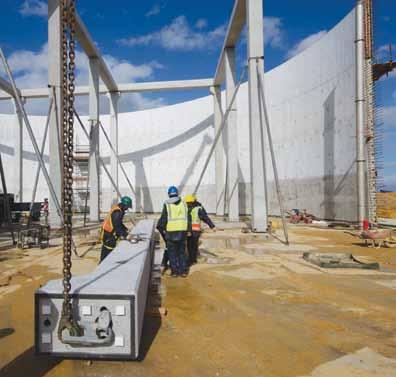
the structure’s building sequence was as follows: construction of the ring-beam foundation and the flooring base layers; the insertion of elastomeric bearing pads on the ring-beams; casting of the walls in quarter sections; casting the column foundations together with the column bolting mechanism; installing the columns, roof beams and hollow-core slabs; sealing off the column bases with grout; completing the sections of the wall and casting the top floor surface; casting a concrete topping on the hollow-core slab roofing and covering it with aggregate.
the advantage of using precast concrete was amply demonstrated by the fact that the erection of the columns, beams and hollow-core panels took only eight days. Sixteen precast
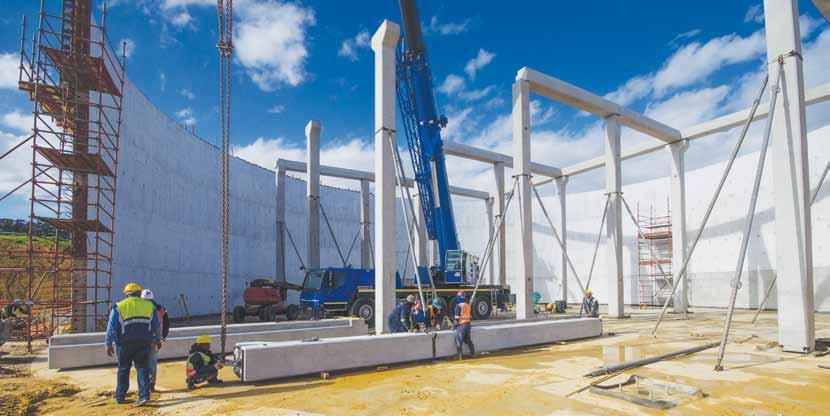
columns with slight height variances around the 11.8m mark were installed within the reservoir walling to support the roof assembly. Column heights were varied to facilitate the structure’s four roof slopes.
a mechanical nut-and-bolt connecting system was used to attach the columns to the foundations. Steel bolting cages comprising four 450mm x 30mm diameter anchor bolts welded to three 30mm steel plates were imbedded in the foundation concrete. In addition, 100 x 100 x 20mm anchor plates were welded to the bottom of each anchor bolt thus giving them additional purchase. the anchor bolts project 150mm above the column foundations for connecting into the column base plates.
Cape Concrete cast 30mm thick base plates into the base of the columns and 33mm holes were drilled into the corner of each steel plate; these slotted over the anchor bolts when the columns were lowered into position. both the positioning of the anchor bolt cage in the foundation and that of the column base plate had to done with pinpoint accuracy to ensure that the anchor bolts and the base plate sleeves were easily aligned.
the columns were propped during installation and 150 x 150mm steel shims were used to stabilize the columns for the initial column load while they were aligned and adjusted to SMEC’s design height. a double-nut mechanism was used to achieve a perfect 90° alignment of the columns and the final load is shared by the bolting system and the shims. once all eight nuts had been tightened, Sikaswell Water Stop was installed around the base of the columns and the cavity between the base and the top of the foundations was sealed off with high-strength non-shrink grout.
Cape Concrete director, Johan Nel, said combining a mechanical connection with a dowel connection made a lot of sense in this application.
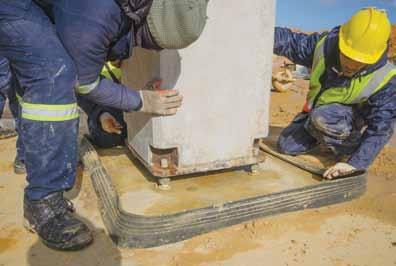
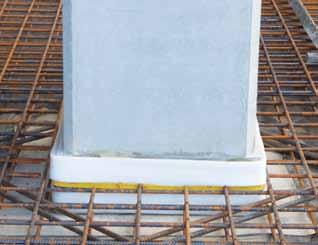
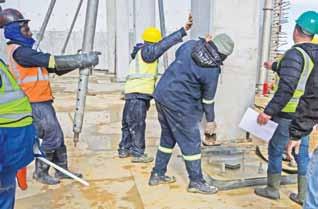
“the accuracy of mechanical connections means that once a beam is seated, dropping in a dowel becomes easy. but we had to scabble the surfaces where the beams and the columns met to roughen them for grouting.”
Five beam types were used on the project. The longest were 8.8m and the shortest 7.58m apiece. the remainder were each 7.87m. the centre beams were tapered by 40mm to accommodate the slope of the roof, which because of its domed shape falls in four directions. apart from the tapered beams, the beams measured 760mm (width) x 700mm (height). all were cast with right-angled recesses 200mm (depth) x 130mm (lip) to seat the hollow-core panels. this ensured that once installed, the top of the panels and the beams sat flush with each other.
Covering 1 200m² all told, the panels were laid beam-tobeam in the central rectangular section of the roof structure and from beam-to-wall. they were mounted on elastomeric bearings to allow for the thermal expansion and contraction of the roof. dimensions of the beam-to-beam panels were a standard 1200mm x 200mm. but panels which span from beam-to-wall all vary in length owing to the fact that the
the roof framework comprised 18 precast beams mounted on top of the columns. depending on the beam layout configurations, the columns were cast with either one or two corbels, and a few were corbel-free. the beams rest on four sets of hdpE packers which Cape Concrete had glued to the top of the columns to create a 25mm gap between the beams and columns for grout insertion. In addition, it lined the top of the columns with 30 x 30mm rubber edging to seal the grouting cavity.
the beam/column connections were further secured with y25 dowel bars, 855mm long. these were inserted through 60mm corrugated metal sleeves which Cape Concrete had cast into the beams and the columns. at least two, and in some instances, three dowels were used for each connection. once the dowel bars were inserted, grout was pumped into the sleeves from the top of the beams.
beams are straight and the wall circular. Moreover, the slabs had to be cut to accommodate the curve of the wall.
once all the slabs were installed, Z-shaped coping 600mm (width) x 550mm (height) x 120mm (thick) was bolted to the wall with a temporary angle bracket. the coping acts as a permanent shutter for the 100mm layer of stitching concrete topping which was cast on roof panelling. the coping’s 80mm rebar was spliced together with the steel mesh of the stitching concrete to integrate the two components in a single unit. a 4mm derbigum waterproofing membrane was laid on top of the stitching concrete and a 100mm layer of 19mm stone was placed on top of that.
Cape Concrete used two concrete mixes, one for the beams and panels and one for the columns. penetron admixture was used for the columns because of its waterproofing properties. all three products were steam-cured and vibrated internally.
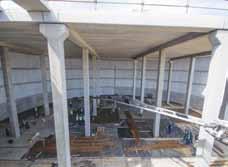
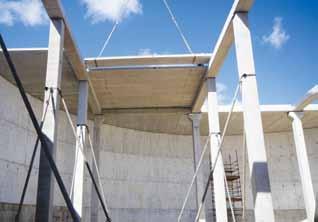
unlike most structures, where walls rest directly on and are supported by the foundations, in this instance the reservoir wall is supported by elastomeric bearings which take the full weight of the wall. glued to the ring-beam at every 950mm, the bearings consist of two rubber-encased stainless steel plates which slide over each other and lend the bearings a degree of flexibility. a bond breaker separates the concrete of the wall from the foundation concrete so that there is no friction between them. this means the wall’s thermal expansion and contraction is transferred to and absorbed by the bearings. this lateral movement allows the wall to expand and contract without cracking and it also facilitated the post-tensioning of the wall.
the compression was evenly distributed during the tensioning process.”
the reservoir has been built with a network of sub-soil drains under the surface bed. the floor layers comprise: 75mm blinding; a 250mm micron plastic sheet; pvC drainage pipes embedded in 250mm of no-fines concrete topped with a 10mm thick levelling screed; two layers of pvC sheeting; and a 200mm layer of reinforced concrete surface-bed.
the surface beds were cast in 7.5m x 9.6m panels in the central rectangle of the floor and were cast in various sizes around the curved perimeter. Sika Waterbar horizontal waterproofing rubber was installed under the surface-bed joints and a 250mm wide hypalon water-proofing bandage was laid above the floor joints once the concrete had cured. and Sika l-shaped rubber water stops were placed between the surface bed and the reservoir wall.
penetron admixture was used in the reservoir wall as well as the surface-bed concrete mix to mitigate possible leaks from cracking. an active ingredient which reacts with water to form insoluble crystals, penetron fills in cracks, pores and voids up to a width of 500micron (0.5mm).
Nakar observed that using precast concrete was of great advantage to the project.
A precast beam is lowered into position.
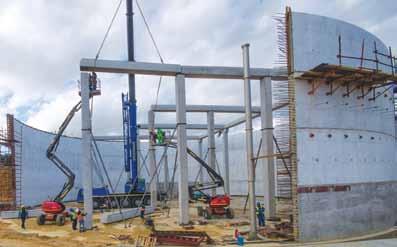
the wall was post-tensioned for additional strength, whicih also meant it required less conventional reinforcing.
“post tensioning minimises the amount of reinforcing required by adding a compressive force to the concrete which resists the tension exerted, in this instance by the water pressure on the reservoir wall,” said SMEC structural engineer, Chen Nakar.
“the post-tensioning cabling was installed in four wall sections, each section containing 25 cable sleeves. Seven woven steel ropes were threaded into each sleeve. the cables were tensioned in a prescribed sequence by post-tensioning specialist ptS (post-tensioning and Structural Solutions (pty) ltd). the tensioning was done with jacks on alternate sleeves so that
“the opportunity to pre-fabricate the precast elements to full design-strength off-site while in-situ construction was under way avoided the lengthy sequencing of in-situ construction, thus saving much time and expense. and avoiding the staging of platforms for the construction of beams and slabs at a wall height of 12.5m was an additional benefit.” n
Client: Western Cape human Settlements
Main contractor: aSla Construction Engineers: SMEC South africa Sub-contractor: Exeo Construction post tensioning: post-tensioning and Structural Solutions precast elements: Cape Concrete
A hollow-core slab is lowered into position.
The partially completed roof during the casting of the floor surface beds.
t t

ABEL EQuIPMEnT CC

TEL: (044) 874 1876 provInCE: EC
DICK KInG LAB SUppLIES (pTy) LTD
TEL: (011) 499 9400 / (031) 700 2551 provInCES: gt / dbN
BIrKEnMAyEr H (pTy) LTD

TEL: (011) 970 3880 provInCE: gt
CHrySo SoUTHErn AfrICA (pTy) LTD
TEL: (011) 395 9700 / (031) 564 0325 / (021) 928 1660 provInCES: gt / kZN / WC
CVZ COnsuLTIng TRAInIng
TEL: 083 701 4167 provInCE: gt
HAWKEyEPEDERsHAAB
TEL: 00 459645 4193 CoUnTry: dENMark
KErnEoS SoUTH AfrICA (pTy) LTD TEL: (011) 444 3090 provInCE: gt KoBrA MoULDS B.v TEL: 003111 356 2460 CoUnTry: NEthErlaNdS
oLI ELECTrICAL vIBrATorS (pTy) LTD

TEL: (011) 392-1054 provInCE: Jhb
pAn MIxErS SA (pTy) LTD

TEL: (011) 578 8700 / 8600 provInCE: Jhb
QuAngOng MACHInEs CO LTD
TEL: +865 958 679 9557 CoUnTry: ChINa REVARO COnCRETE EQuIPMEnT TEL: (011) 794 8271 provInCE: Jhb
TErrAforCE (pTy) LTD

TEL: (021) 465 1907 provInCE: WC
AFRIsAM SoUTH AfrICA (pTy) LTD TEL: (011) 670 5500 website: www.afrisam.co.za

southern Africa’s construction industry will once again connect in person at the most important event on the industry’s calendar, The big 5 Construct southern Africa, previously African Construction Expo. Join over 8,500 industry professionals for three days of valuable business connections, create lasting brand awareness and gain a competitive advantage.
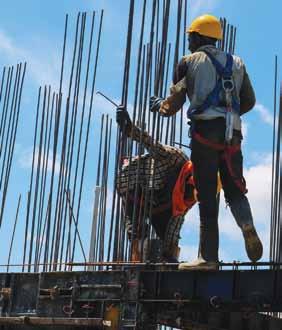
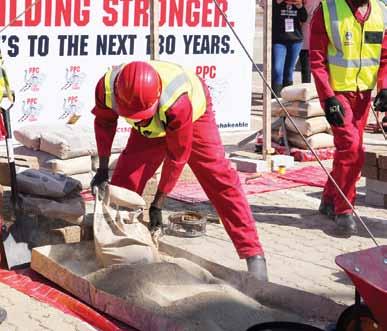
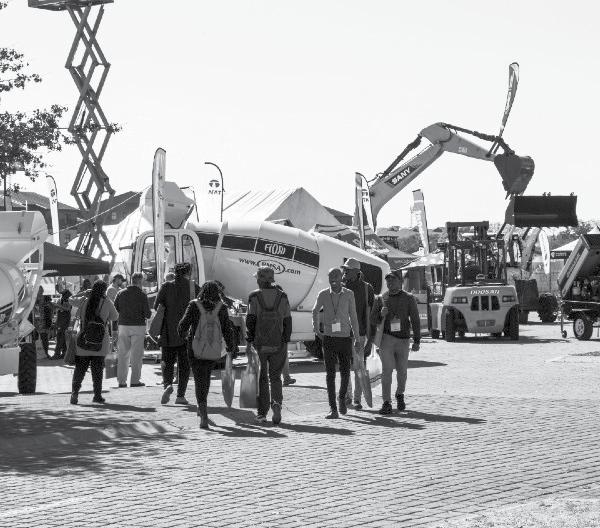
Grow your business in the region
Get in touch with us to see how we can help you achieve your business objectives with a range of exhibiting and sponsorship opportunities to suit any budget.

Challenging sands is a growing issue for the concrete industry. Whether dealing with single size, finely graded or high clay content sands, CHRYSO®Quad concrete admixtures allow the production of excellent performing concrete. CHRYSO®Quad Solutions have been made possible by several specific polymers, developed after more than ten years of R&D, including the breakthrough CLEAR®Technology (Clay Enabling Admixture Response).

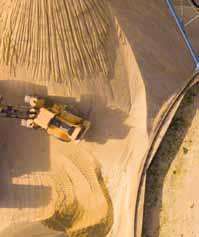
CHRYSO®Quad:

Improves concrete quality and performance when using challenging materials including manufactured sands






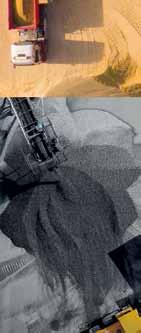


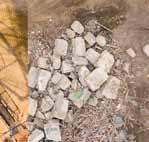
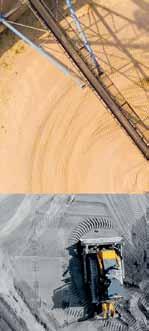
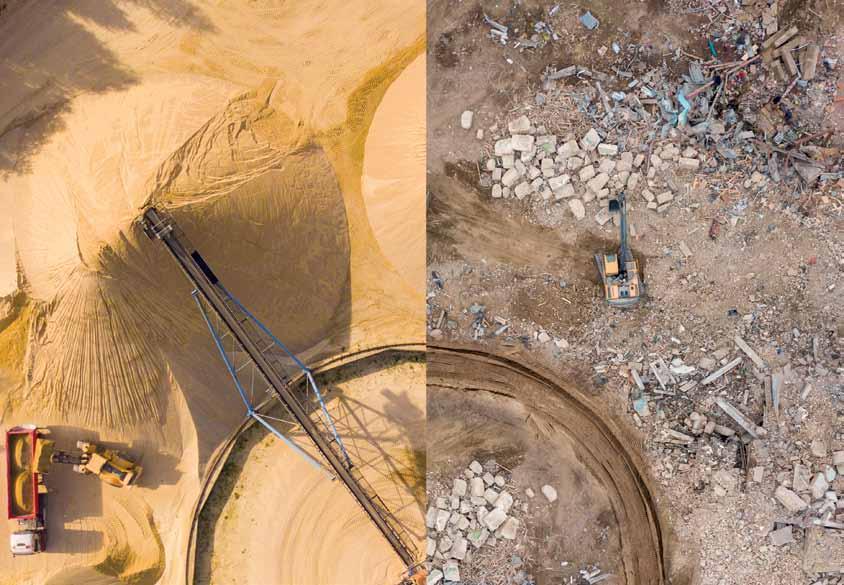
Reduces environmental impact (carbon footprint)





Allows for the use of local resources and delivers concrete cost savings